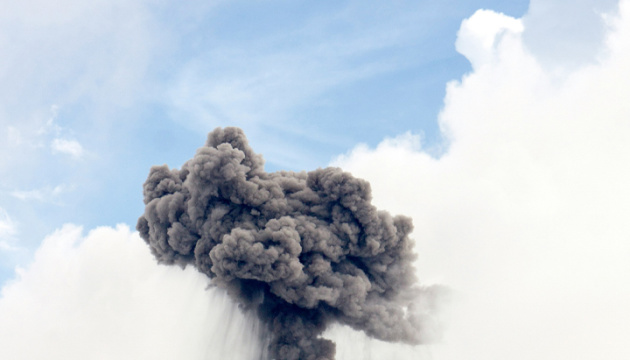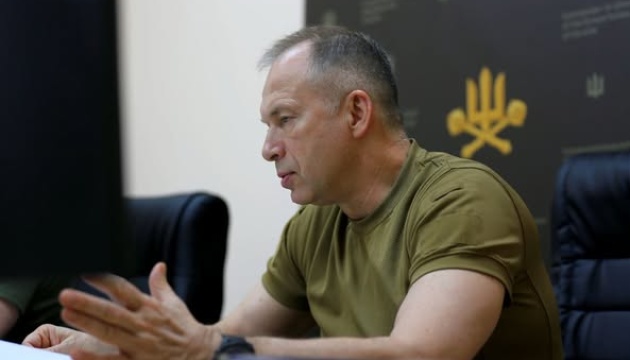Ukraine looks forward to constructive dialogue with new Polish president, says ambassador



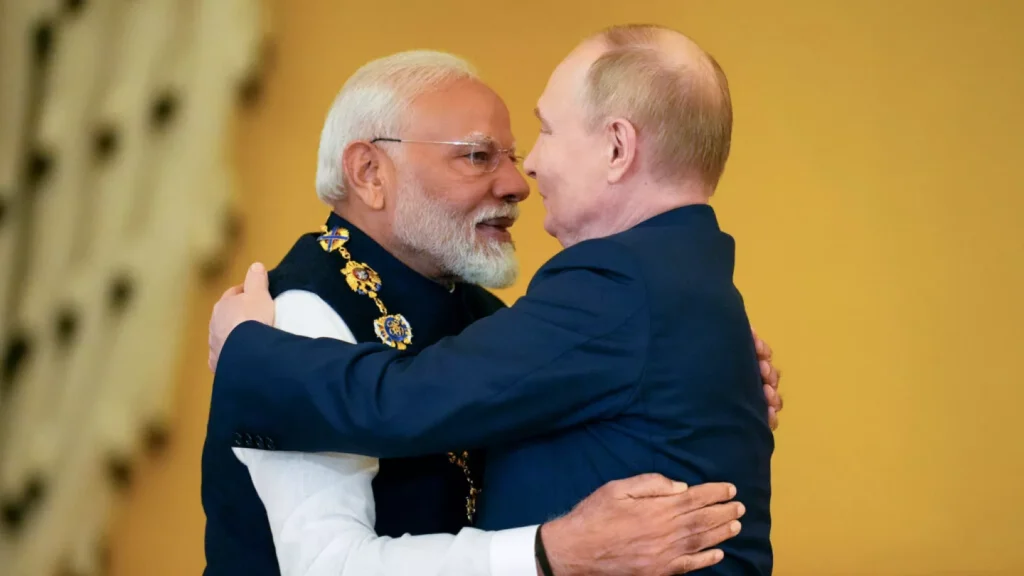
In a notable editorial convergence, The Telegraph has published two pieces suggesting a striking possibility: India may hold the key to ending the war in Ukraine.
As peace negotiations remain stalled, US President Donald Trump is pursuing a new strategy — one that aims to cut off Russia’s oil income, the financial lifeline that allows Moscow to continue its military campaign. The logic is simple but consequential: as long as countries keep buying Russian oil, Russia can keep funding its war. And two of the biggest buyers are India and China.
One Telegraph report, by Senior Foreign Correspondent Adrian Blomfield and Data Journalist Meike Eijsberg, details Trump’s sharp pivot. After months of shielding Putin from serious consequences, the president is now threatening 100% tariffs on nations that continue to purchase Russian oil — a move aimed squarely at throttling Russia’s war economy.
Yet despite China being Russia’s top energy customer, Trump has refrained from criticizing Beijing. Instead, he has singled out India, the second-largest buyer.
“They’re fuelling the war machine, and if they’re going to do that, then I’m not happy,” Trump told CNBC, vowing further penalties for Delhi’s oil purchases.
According to the Global Trade Research Initiative, India’s Russian oil imports surged from near-zero pre-war to 2.15 million barrels per day by mid-2023, now making up around 45% of its total supply. That translated to $51 billion in revenues for Russia last year alone.
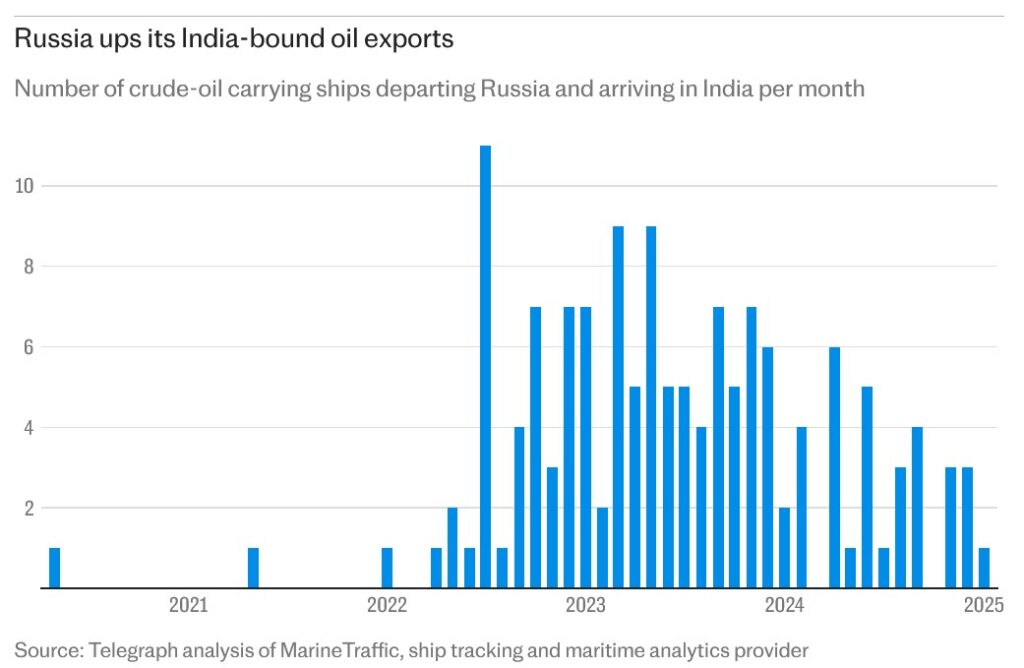
In a separate opinion column, Colonel Tim Collins, former British Army officer, builds on this geopolitical moment. He argues that India’s decades-old strategic relationship with Russia — forged during the Cold War — is coming under pressure from new realities, particularly China’s growing regional dominance.
“India sees itself increasingly surrounded by potential enemies,” Collins writes, citing China’s rising influence in Sri Lanka, Bangladesh, and Pakistan, including military cooperation and infrastructure encroachment.
India’s military, still heavily reliant on Russian-made equipment, has been tested — most recently in the brief “100-hour war” with Pakistan. According to Collins, that conflict exposed drone capability gaps and other vulnerabilities, many linked to Chinese support for Pakistan.
These military setbacks have pushed India to diversify its defense partnerships, turning to US, French, and Israeli suppliers while accelerating domestic arms production. Yet its longstanding relationship with Russia has made any meaningful cooperation with Ukraine politically off-limits.

Taken together, The Telegraph’s reporting outlines a core question: Can India keep buying Russian oil while preparing for a future aligned with Western powers?
India’s balancing act is becoming harder. As a member of The Quad (with the US, Japan, and Australia), India is seen as a critical counterweight to China. Yet its energy dependence on Russia has, in Trump’s view, become a liability to the West — and a lifeline to Putin.
“If energy goes down enough, Putin is going to stop killing people,” Trump said last week. “If you get energy down another $10 a barrel, he’s going to have no choice.”
Despite this, Trump has avoided confronting China, which buys even more Russian oil — about 47% of Moscow’s exports. Instead, The Telegraph suggests India has become the central target of Trump’s pressure campaign — and potentially a decisive lever in ending the war.
According to both reports, the direction of travel may ultimately depend on Prime Minister Narendra Modi’s calculation — between old loyalties to Moscow and new strategic needs.
“Perhaps a Trump charm offensive may be more decisive in the short term as opposed to any form of coercion or strong words,” Collins writes.
At stake is not just the global oil market or India’s own security posture, but possibly the trajectory of the war in Ukraine itself.
As The Telegraph implicitly argues, if India cuts or significantly reduces Russian oil imports — whether due to US pressure, regional insecurity, or long-term strategic shifts — the financial strain on the Kremlin could force a change in Putin’s calculus.
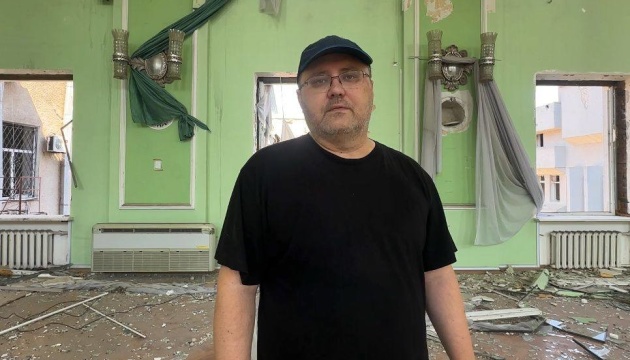

Ukraine’s Cabinet has finally appointed the anti-corruption detective Oleksandr Tsyvinskyi as director of the Bureau of Economic Security (BEB), ending weeks of deadlock that drew international criticism and jeopardized IMF funding.
Tsyvinskyi won the official selection process earlier in July, receiving unanimous support from the commission. Yet the appointment stalled amid unsubstantiated security concerns — a delay that risked derailing up to $2.3 billion financial aid.
Under Ukrainian law, the Cabinet had ten working days to formalize the appointment.
Politicians chose obstruction instead.
Tsyvinskyi finally got his job today after a month-long political standoff exposed how Ukraine’s reform process works behind closed doors. The appointment came only after mounting pressure from Western donors who clarified that continued delays could jeopardize billions in aid.
Ukraine’s $15.6 billion IMF loan program included a 31 July deadline to name a new BEB director.
Missing that deadline by a week likely won’t affect the next aid tranche — the IMF routinely grants extensions for structural benchmarks — but the prolonged obstruction damaged Ukraine’s credibility with international partners.
Tsyvinskyi represents exactly what Western donors hoped to build in Ukraine. The PhD holder spent nearly a decade at Ukraine’s National Anti-Corruption Bureau, methodically building cases against untouchable figures like ex-MP Serhiy Pashynskyi, who was charged with embezzling millions in oil products.
In June, a six-member selection commission chose him unanimously, with the three international experts whose votes were decisive under Ukrainian law all supporting his candidacy. The transparent competition was designed specifically to prevent political interference.
The Bureau of Economic Security threatens powerful interests by design. Created in 2021 to replace Ukraine’s corrupt tax police, it investigates economic crimes that intersect with business networks and political patronage.
For example, in 2023, BEB detectives uncovered fuel-smuggling networks worth $29 million and counterfeit tobacco operations that cost the state $38 million.
These are precisely the cases that make politicians with business ties uncomfortable.
Officials initially leaked concerns about Tsyvinskyi’s father, a Russian citizen living in Russia. The Security Service of Ukraine demolished this excuse, with Ukrainian online newspaper Babel reporting that the SBU confirmed no legal reasons existed to block his appointment.
The double standard was obvious. Russian-born General Oleksandr Syrskyi, Ukraine’s commander-in-chief, has close relatives in Russia — yet it’s never been an issue. Tsyvinskyi, meanwhile, told reporters he hadn’t spoken to his father in over a decade.
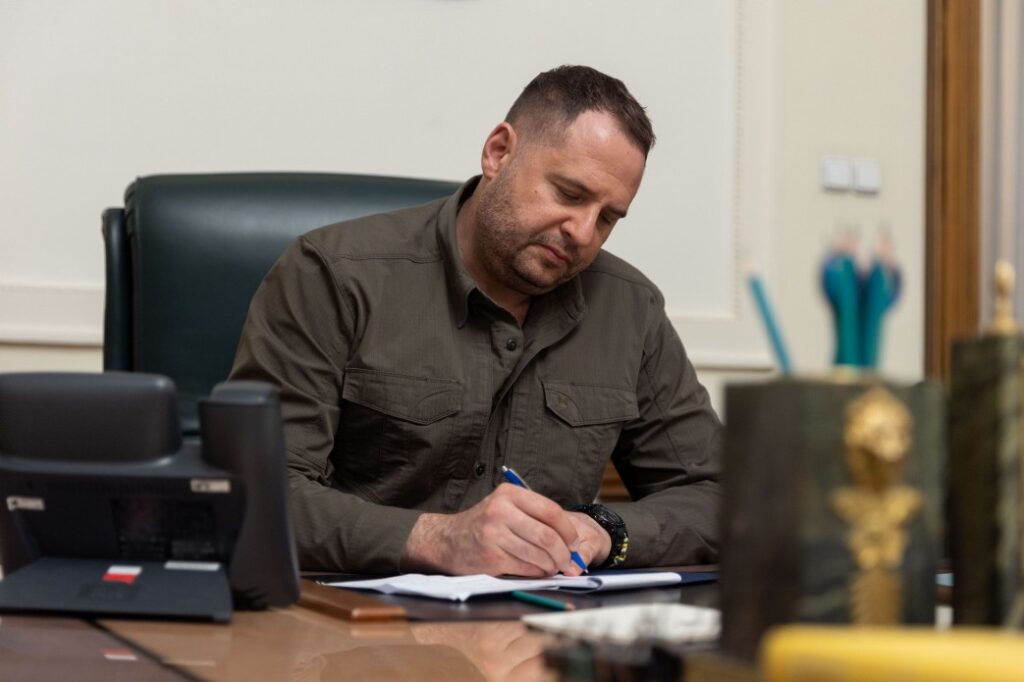
The delay wasn’t random bureaucracy. It came amid broader tensions over control of anti-corruption institutions, with Andriy Yermak, head of the Office of the President (pictured), steadily expanding his influence over personnel policy. Prime Minister Yuliia Svyrydenko, his close ally, chairs the Cabinet, which refused to sign Tsyvinskyi’s appointment within the legal deadline.
The timing was suspicious. Around the same time, the government tried — and failed — to place the National Anti-Corruption Bureau (NABU) and Specialised Anti-Corruption Prosecutor’s Office under tighter executive control. That rollback also came only after intense international pressure.
By mid-July, Ukrainian business groups warned that Tsyvinskyi’s limbo status could disrupt the agency’s reforms and create problems with international partners. Civil society groups called it a procedural violation.
Tsyvinskyi abandoned his reserved professional stance and went public, accusing officials of using “manipulative” tactics to sabotage his candidacy.

While Ukraine’s Cabinet dodged questions, pressure from international donors ultimately forced the appointment.
The International Monetary Fund and European Commission had backed the competitive selection process as a core pillar of Ukraine’s anti-corruption reforms. With billions in aid flowing through government systems, donor trust became a concrete factor in political calculations.
Ukraine’s IMF deal includes $2.3 billion in aid this year — but only if Kyiv meets its structural reform milestones.
According to the Kyiv Independent, Western donors viewed the delay as a test of Kyiv’s credibility, with direct implications for financial support. More than 60 civil society organizations and business groups issued open letters demanding Tsyvinskyi’s appointment.
“The reform of the BEB is vital for Ukraine’s business climate, investment prospects, and progress toward Euro-Atlantic integration,” the G7 said in a public statement.
The message was clear by late July: continued obstruction could jeopardize that support. The government began signaling that Tsyvinskyi might be appointed in early August, after he agreed to take a polygraph test.
Tsyvinskyi passed the test on 5 August. Of course, he did — the whole exercise was face-saving theater. The mounting pressure had worked.
The Tsyvinskyi case wasn’t isolated. Oleksandr Danyliuk, a respected former Finance Minister, applied to head the Bureau of Economic Security in 2021 but was disqualified on technical grounds — officials said he couldn’t provide a diploma in the right specialty.
The irony was stark: a former minister with extensive economic expertise was blocked from leading a financial crimes agency over paperwork.
These cases reveal a pattern. When qualified candidates can’t be trusted to follow informal instructions, the system finds ways to exclude them — until international pressure becomes too strong to ignore.
Tsyvinskyi’s appointment resolves the immediate crisis but raises more intricate questions. Will he be allowed to operate independently, or will the government try to constrain his work behind closed doors? Will the BEB’s long-delayed investigations finally start moving?
Much depends on whether Western stakeholders maintain pressure. The IMF’s next review mission looms, and Ukraine’s EU accession talks are underway. With $2.3 billion on the line, the question is whether Kyiv’s leadership truly accepts that institutional independence isn’t a bargaining chip.
The fight over his appointment showed how fragile these reforms remain. Even amid war, even with international oversight, even with transparent procedures, political interference can still derail the process.
For Tsyvinskyi, the job is no longer just about combating economic crime. It’s about whether merit can survive politics in Ukraine’s reform landscape — and whether a qualified investigator can investigate when powerful interests prefer he doesn’t.
The real test begins now.

Steve Witkoff - the president’s international diplomatic Mr Fixit - has failed to bring peace to the Middle East or deliver on Trump’s boast to end the war in Ukraine in 24 hours, writes world affairs editor Sam Kiley

© RIA_Kremlinpool/Telegram
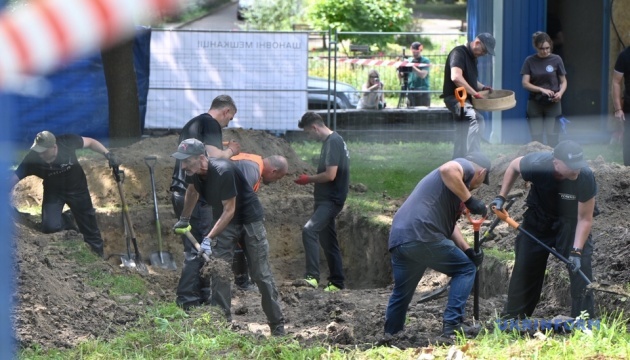
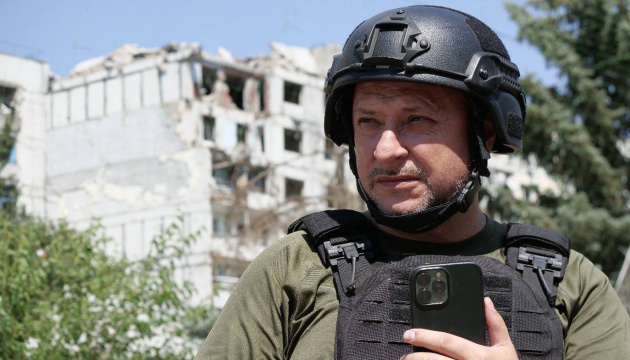
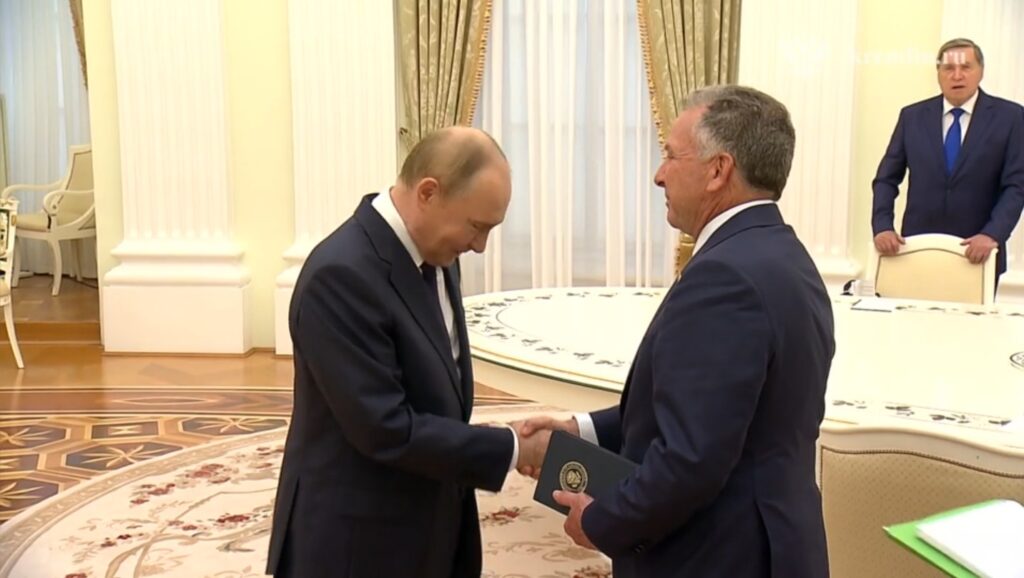
Russian state media confirmed that a meeting between US special envoy Steve Witkoff and President Vladimir Putin is currently underway at the Kremlin, just 48 hours before the expiration of Donald Trump’s ceasefire ultimatum.
Witkoff arrived in Moscow early Wednesday and was later seen walking through Zaryadye Park with Kirill Dmitriev, the Kremlin’s investment envoy. This marks Witkoff’s fifth visit to Moscow this year and fourth known face-to-face meeting with Putin.
Witkoff has emerged as Trump’s most visible backchannel to the Kremlin, with more face time with Putin this year than any other known American official.
Steve Witkoff — the American who’s met with Putin more than anyone this year — is back in Moscow for round 5.
— Euromaidan Press (@EuromaidanPress) August 6, 2025
Will Russia offer anything to avoid sanctions?
Trump’s ceasefire deadline: Friday, 8 August. pic.twitter.com/9FyHy4mFXv
President Trump has issued a 10-day deadline demanding that Russia agree to a ceasefire in Ukraine—or face sweeping sanctions. Originally a 50-day window, Trump cut the deadline in half during a recent visit to Scotland.
“We have a meeting with Russia tomorrow. Let’s see what happens,” Trump told CNBC on Tuesday night. “We’ll make that determination at that time.”
According to The Telegraph, Trump is also considering tariffs up to 100% on countries buying Russian energy—specifically India and China—to target those “fueling Russia’s war machine.”
“I never said a percentage,” Trump said, “but we’ll be doing quite a bit of that.”
Deputy White House Press Secretary Anna Kelly said:
“The President has made it clear: if Putin refuses to end the war, there will be severe sanctions. We won’t get ahead of the President by discussing details.”

According to reporting by Bloomberg and The Telegraph, Putin may propose a limited ceasefire focused on halting missile and drone strikes—an “air truce”—as a gesture toward de-escalation. The offer would depend on Ukrainian agreement and fall short of a full ceasefire.
“Russian officials believe Mr Witkoff’s appearance in the Russian capital will provide Putin with an opportunity to restart talks with the US and head off threats of sanctions,” reported The Telegraph.
The idea was reportedly discussed during a meeting between Putin and Belarusian President Alexander Lukashenko last Friday. Lukashenko later told reporters:
“As for an air ceasefire. I say, yes, Russia is interested in this, President Putin, but you don’t want it,” referring to US envoy Gen. Keith Kellogg. “Tell Zelenskyy to go along with it.”
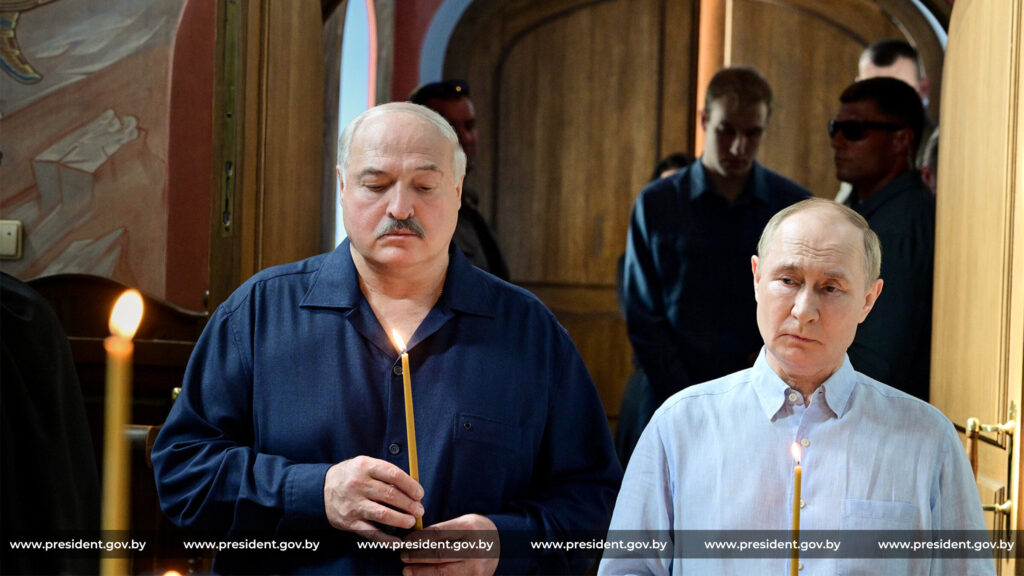
Ukrainian President Volodymyr Zelenskyy has publicly welcomed the threat of new US sanctions, saying Russia would only pursue peace when it “begins to run out of money.”
“Their economy continues to decline, and that’s exactly why Moscow is so sensitive to this prospect and President Trump’s resolve,” Zelenskyy said on his recent call with the US President.
The Ukrainian leader also confirmed a “productive” call with Trump this week. They discussed defense cooperation and a new European arms deal, where countries like the Netherlands, Sweden, Norway, and Denmark pledged over $1 billion to fund air defenses and ammunition for Kyiv.
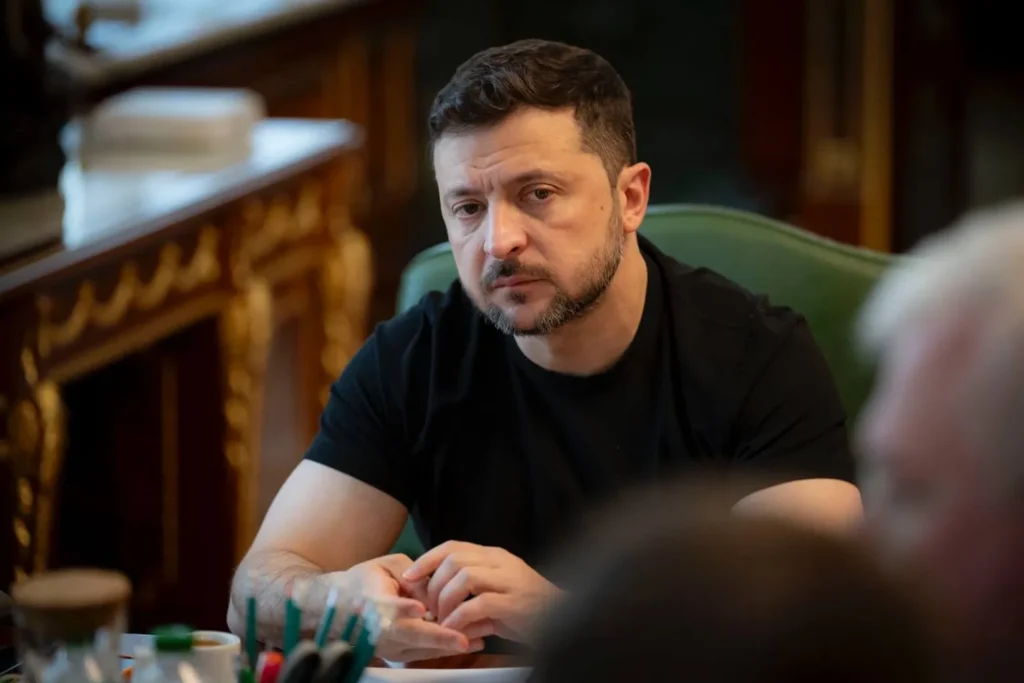
While peace is discussed in Moscow, Russia continues large-scale attacks on Ukraine. On Wednesday, Zelenskyy said a gas facility in Odesa Oblast had been struck by Russian missiles overnight, targeting the village of Novosilske near the Romanian border.
“This was a deliberate blow to our preparations for the heating season—absolutely cynical,” he wrote on Telegram. “Like every Russian blow to the energy sector.”
The area houses the Orlovka interconnector, a key gas transit point from the Transbalkan pipeline, used to import gas into Ukraine.
Meanwhile, the Kyiv City Military Administration confirmed the death toll from last week’s missile strike had risen to 32—the deadliest attack on the capital since the war began.
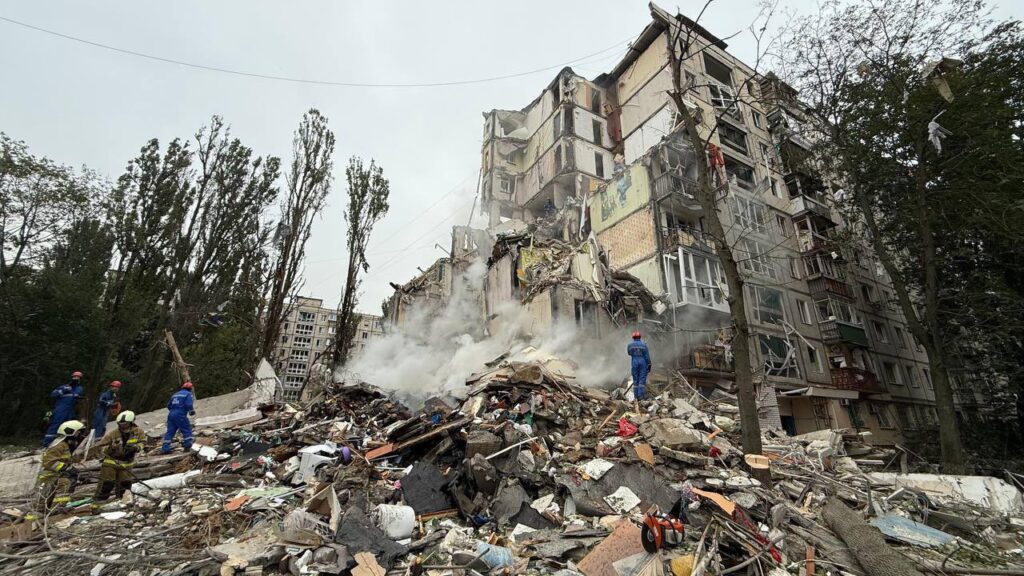
This fifth Putin–Witkoff meeting is seen as the final diplomatic window before Trump enacts potentially devastating measures.
“If Witkoff returns empty-handed, Trump will be furious,” a Financial Times source said.
Kremlin spokesperson Dmitry Peskov commented briefly:
“We consider such meetings to be very important, but we don’t comment on them in advance.”
Behind the scenes, Reuters reports that Putin remains doubtful fresh US sanctions would do serious damage, given the existing restrictions already in place. While he’s said to recognize the potential for improving ties with Washington, his military priorities continue to take precedence.
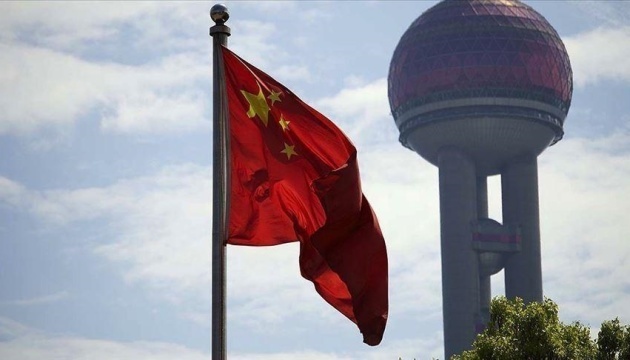


© Copyright 2025 The Associated Press. All rights reserved
Ukraine considers all grain produced in the four regions and Crimea - annexed by Russia in 2014 - to have been stolen by Moscow

© Reuters
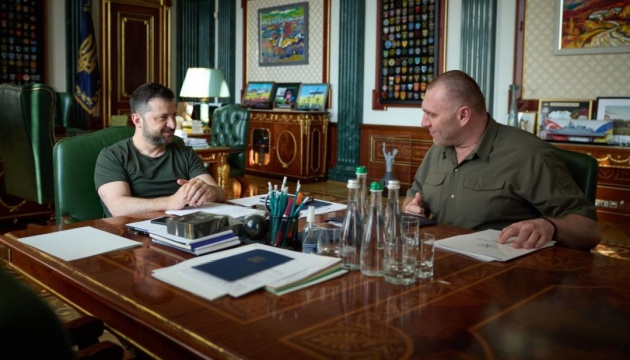
Watch as US envoy Steve Witkoff meets with Vladimir Putin in Moscow just days ahead of a Russia-Ukraine ceasefire deadline.

© POOL/AFP via Getty Images
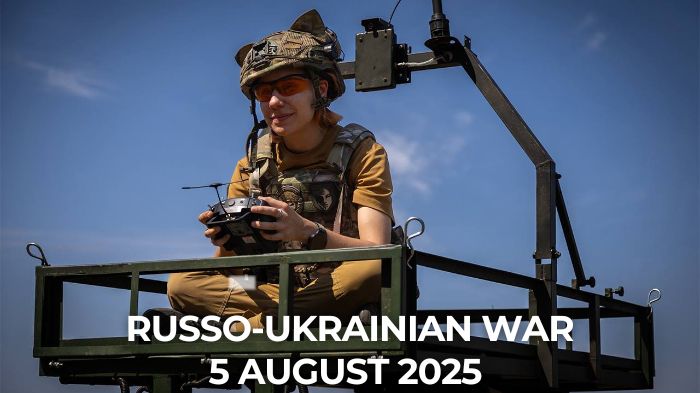
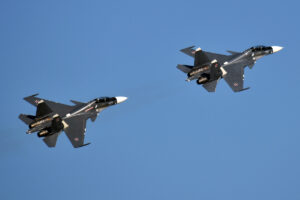 |
Russia built 12 jet bunkers in Crimea. Ukraine’s drones blew through them. Ukraine’s state security agency, the vaunted SBU, has made a bad summer for the Russian air force much worse. |
 |
Russia’s 137× drone surge wasn’t magic—it was Chinese engines labeled “fridges”. Ukraine faced just 40 drone attacks monthly in 2022. Now it’s over 5,000—using Cold War engines China ships as “refrigerators.” |
Russia refuses to end war, even after losing 267,460 troops in 2025 alone. Russia’s war machine is breaking down, with 1.058 million troops, 11,071 tanks, and 421 aircraft destroyed since February 2022.
Ukraine’s special forces eliminate eight Russian companies in one rear operation
. Ukraine’s special forces launched deep raids and cut off Russian supply chains.
It launched one salvo and disappeared in flames: Ukrainian drones make rare kill of Russian TOS‑1A (video). The rare TOS‑1A thermobaric missile launcher tried to hide after firing, but its heat trail betrayed it to the sky.
Drone attack hits Russia’s Rostov Oblast—fire breaks out near railway station.
Sweden, Norway, Denmark, and Netherlands sent American weapons worth $1 billion to Kyiv in two days. The new PURL initiative accelerates arms deliveries, reinforcing Kyiv’s frontline with vital US-made firepower.
Most Germans say they won’t fight for their homeland, while Russia launches $1,1 trillion rearment program since Soviet Union. Despite German intelligence warning of Kremlin provocations, a majority of Germans still say they won’t take up arms to defend their country.
Hindustan Times: Ukraine found India-linked electronics in Russia’s Shahed drones
. Ukrainian investigators tracked Indian-assembled tech in Shahed 136 drones attacking civilian areas.
Netherlands becomes first NATO country to buy US Patriot missiles for Ukraine. The Dutch government has allocated €500 million to fund US-made Patriot missile systems and components for Ukraine—marking a first among NATO allies.
Finland rejects NATO’s new procurement tool for Ukraine. While NATO rallies billions for Ukraine, Helsinki charts its own course — arming Kyiv without joining the club.
“War is already at our doorstep”: NATO accelerates military aid for Ukraine. NATO wants to ensure Ukraine receives air defense systems precisely when they are needed most.
India holds up mirror to West: Stop your Russian oil deals before demanding ours. Under pressure from the US, India insists its energy strategy is economic necessity, not political choice, and calls out Western double standards.
‘It’s not safe to return’: Ukrainian refugees face work permit limbo in US
. Communities that embraced displaced Ukrainians now worry about their legal futures, CBS reports.
Thousands of lives are at stake this week as Washington holds key to peace, says Zelenskyy’s top aide. Head of the Ukrainian Presidential Office Andrii Yermak argued that decisive US action, targeting Russia’s energy and financial arteries, can bring Vladimir Putin’s war to an end.
Lozova’s worst drone strike: Russia kills railway worker, injures teenagers. Moscow’s overnight barrage on the civilian city included 46 kamikaze drones and a ballistic missile.
Kremlin’s oil revenues drop by nearly 33% — but Trump’s sanctions threaten even more pain. With oil and gas revenues down 27%, the Kremlin braces for fresh US measures targeting not only Moscow but also its energy partners.
Panama just slammed the door on Russia’s shadow fleet — tankers over 15 years old now blacklisted
. The world’s largest shipping registry just threw a wrench into Moscow’s oil smuggling machine.
Ukraine wins historic $5 billion award against Russia—and Europe starts making Moscow pay it. For the first time, Ukraine’s $5 billion arbitration victory is being enforced as Austria confiscates Russian property worth €120 million.
Cold “space” war: China-Russia race to install nuclear reactor on moon and establish “restricted zones” for US. In response, NASA is accelerating its own nuclear power program for the Moon. A recent directive sets a tight timeline: a program leader must be appointed within 30 days.
Read our earlier daily review here.
You could close this page. Or you could join our community and help us produce more materials like this.
We keep our reporting open and accessible to everyone because we believe in the power of free information. This is why our small, cost-effective team depends on the support of readers like you to bring deliver timely news, quality analysis, and on-the-ground reports about Russia's war against Ukraine and Ukraine's struggle to build a democratic society.
Become a patron or see other ways to support.
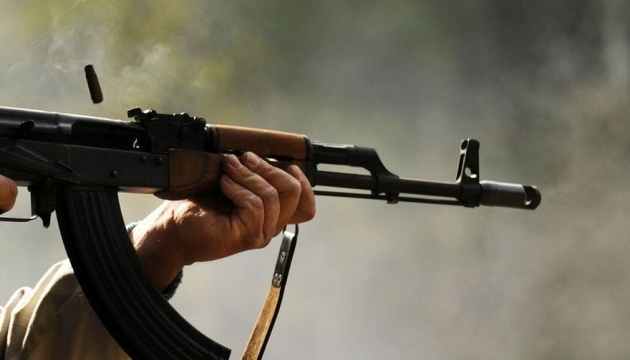
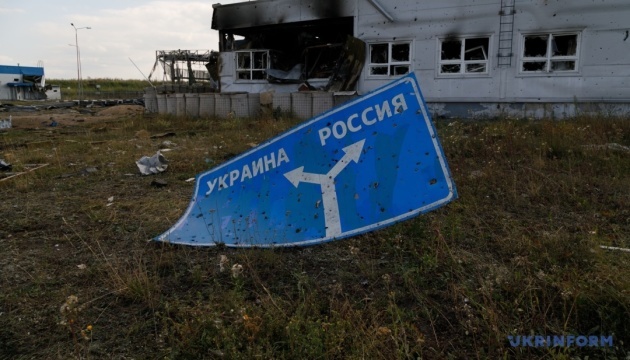
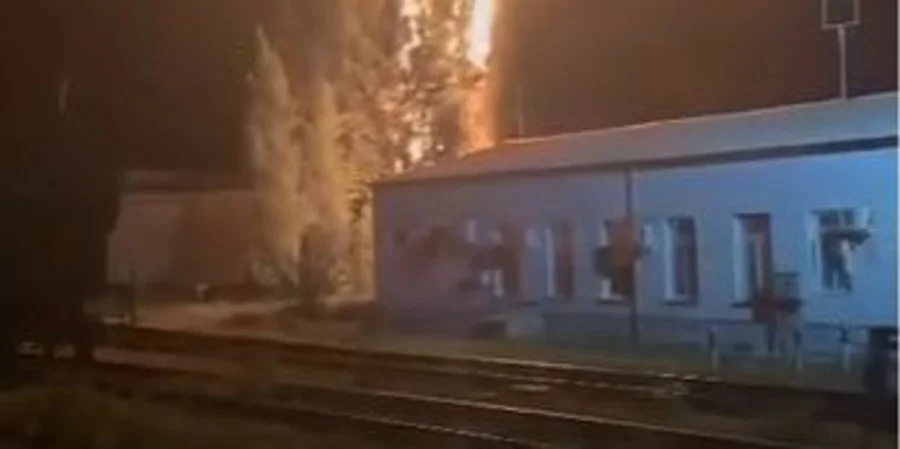
Ukrainian drones struck the Tatsinskaya railway station in Russia’s Rostov Oblast for the second consecutive night, causing a fire near freight tanks, according to Russian Telegram channel Astra.
The attack occurred during the night of 5-6 August. Local residents reported about explosions and subsequent fires at the facility.
“The drone strike was apparently aimed at railway infrastructure,” said Petro Andryushchenko, head of the Center for the Study of Occupation.
“This is a non-electrified section of the railway and we are not hitting substations. This means we are systematically cutting out the Russians’ railway, including diesel traction with locomotives. For a long time,” he said.
The Tatsinskaya station had already been targeted the previous night, with explosions and fires reported on 4-5 August. That attack also affected the cities of Millerovo and Belaya Kalitva in the same oblast.
The railway attacks represent a shift toward targeting transportation infrastructure that supports both civilian and military logistics. The Tatsinskaya station sits on a key rail line connecting southern Russia with other oblasts.
Separately, the Russian city of Bryansk came under massive drone attack early morning on 6 August. Local witnesses described a column of thick black smoke rising from an oil depot area where drone debris had fallen.
The Bryansk Oblast has faced repeated drone attacks throughout the summer. In late June, Ukrainian drones struck rocket fuel storage facilities and fuel and lubricant warehouses belonging to the Russian army, causing fires at an oil depot. Ukrainian forces also destroyed an Iskander missile system near Bryansk during that period.
Russian authorities have not officially commented on either the railway station attacks or the Bryansk oil depot strike.


Day 1259
On 5 August, the biggest updates come from the Kherson direction.
Here, Ukrainian special forces executed a daring amphibious landing on one of Russia’s most exposed positions in Ukraine. Taking out patrols and destroying critical equipment, this raid has now opened the door to a wide variety of naval, aerial, and further special forces operations across the Black Sea and the Crimean peninsula.
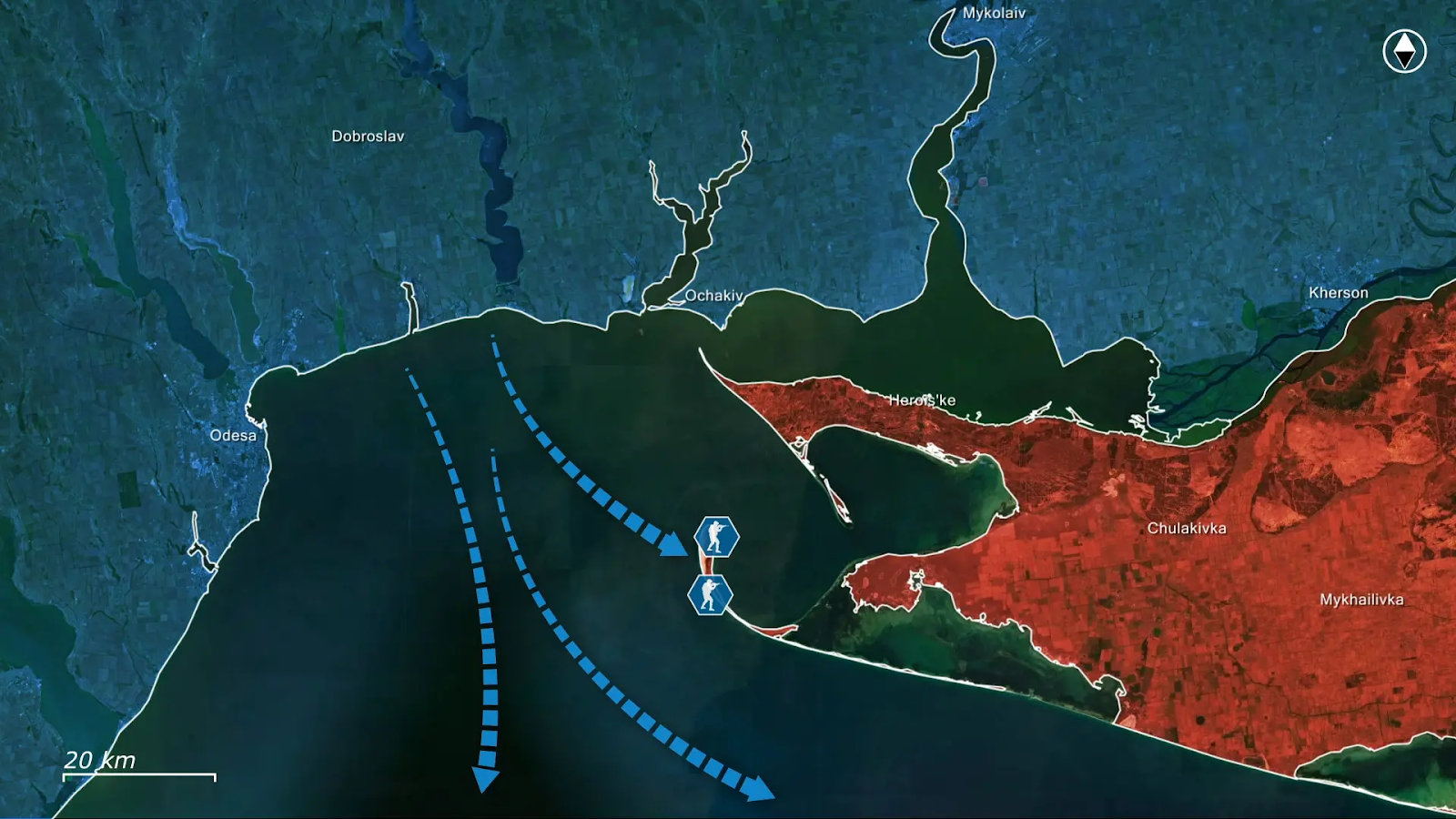
Ukraine’s military intelligence service posted footage of how its operatives carried out a naval landing operation on the Tendrivska spit in eastern Kherson. Operatives moved across the Black Sea in rubber boats mounted with radars, electronic warfare systems, and machine guns, similar to boats used by Nato’s naval special forces teams. Landing on the beaches, the groups quickly disembarked and moved inland past several unmanned Russian coastal fortifications and bunkers. The groups then waited for the cover of night, turned on their night vision goggles, and moved toward their targets.
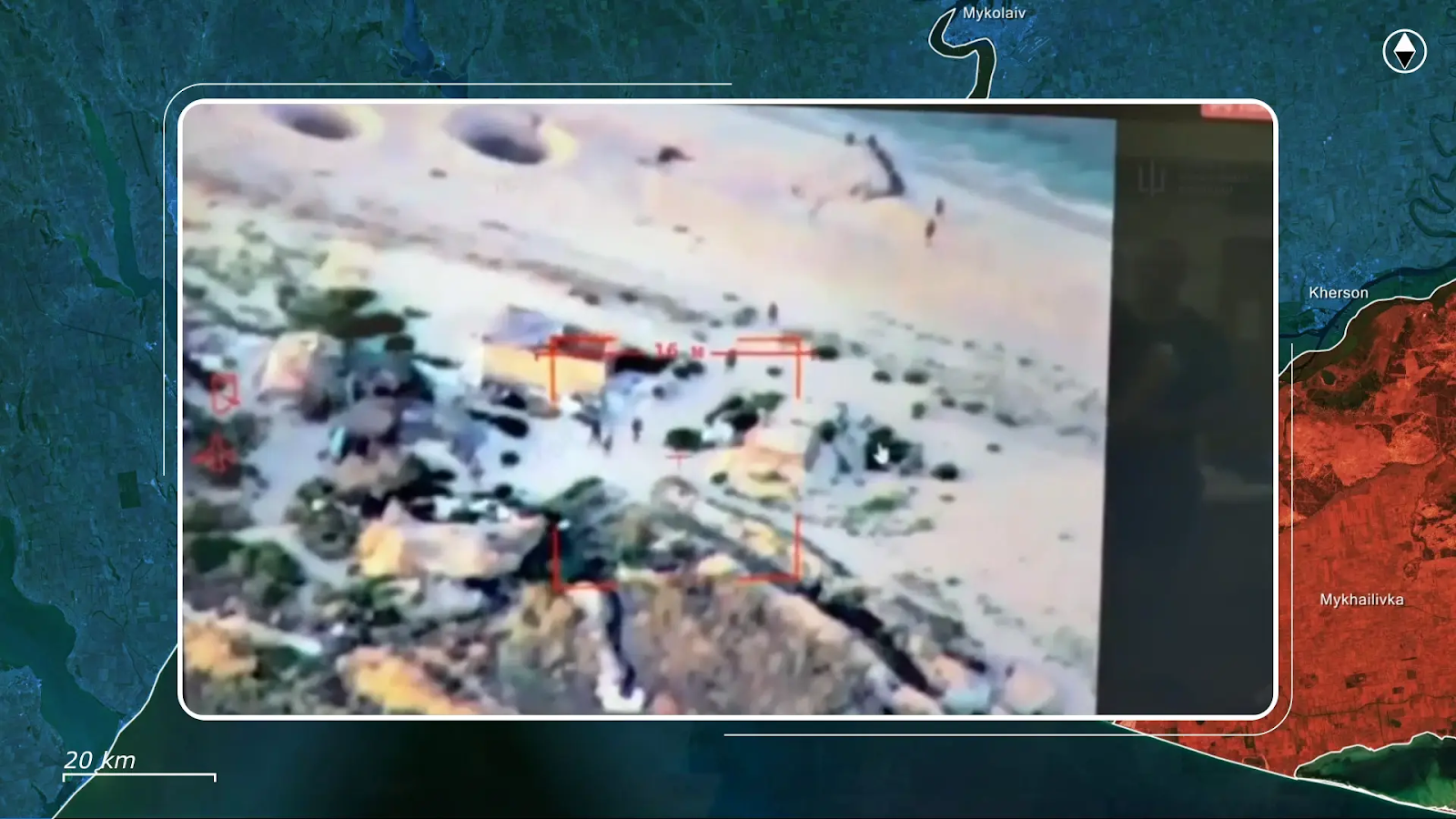
Their mission: destroying a Russian Rosa radar system and the Zont electronic warfare station protecting it. As they moved toward the targets, they even launched FPV drones to feed live intelligence to the assault groups, and strike any Russian target too dangerous to engage head-on. Before heading back after the successful destruction, they planted the Ukrainian flag on the position, and left a final message for the Russians in the morning: Glory to Ukraine.
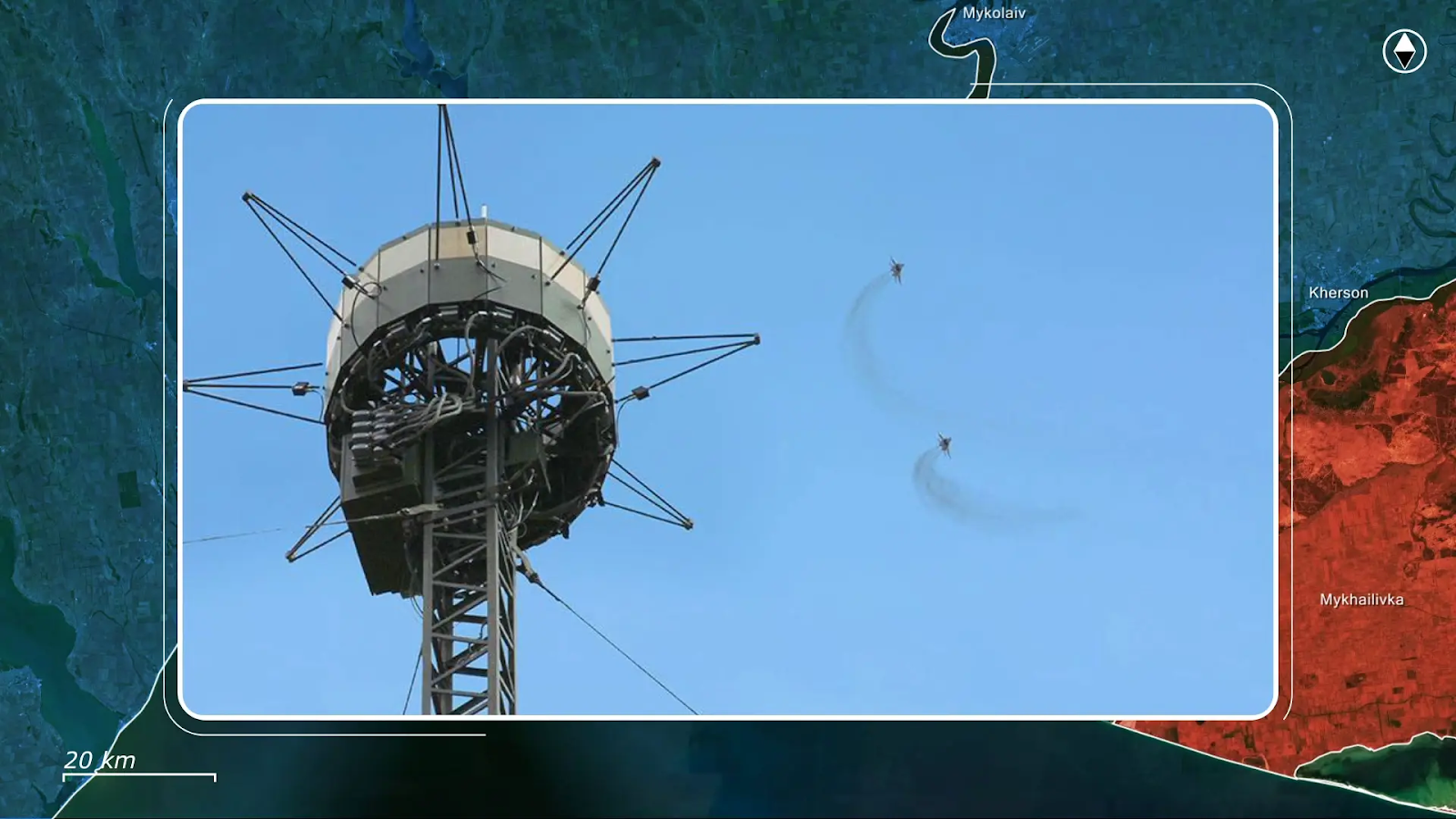
The raid was not a detached victory, but a necessary operation that serves a larger strategic purpose. The Tendrivska spit’s topographical setting allows Russians to position radars and electronic warfare equipment that can cover a wide area over the Black Sea as far as possible. Specifically, this allows Russians to detect and disrupt Ukrainian naval and aerial drone strikes, forcing Ukrainians to avoid the coast and creating a more narrow pocket for other Russian air defense assets to monitor.
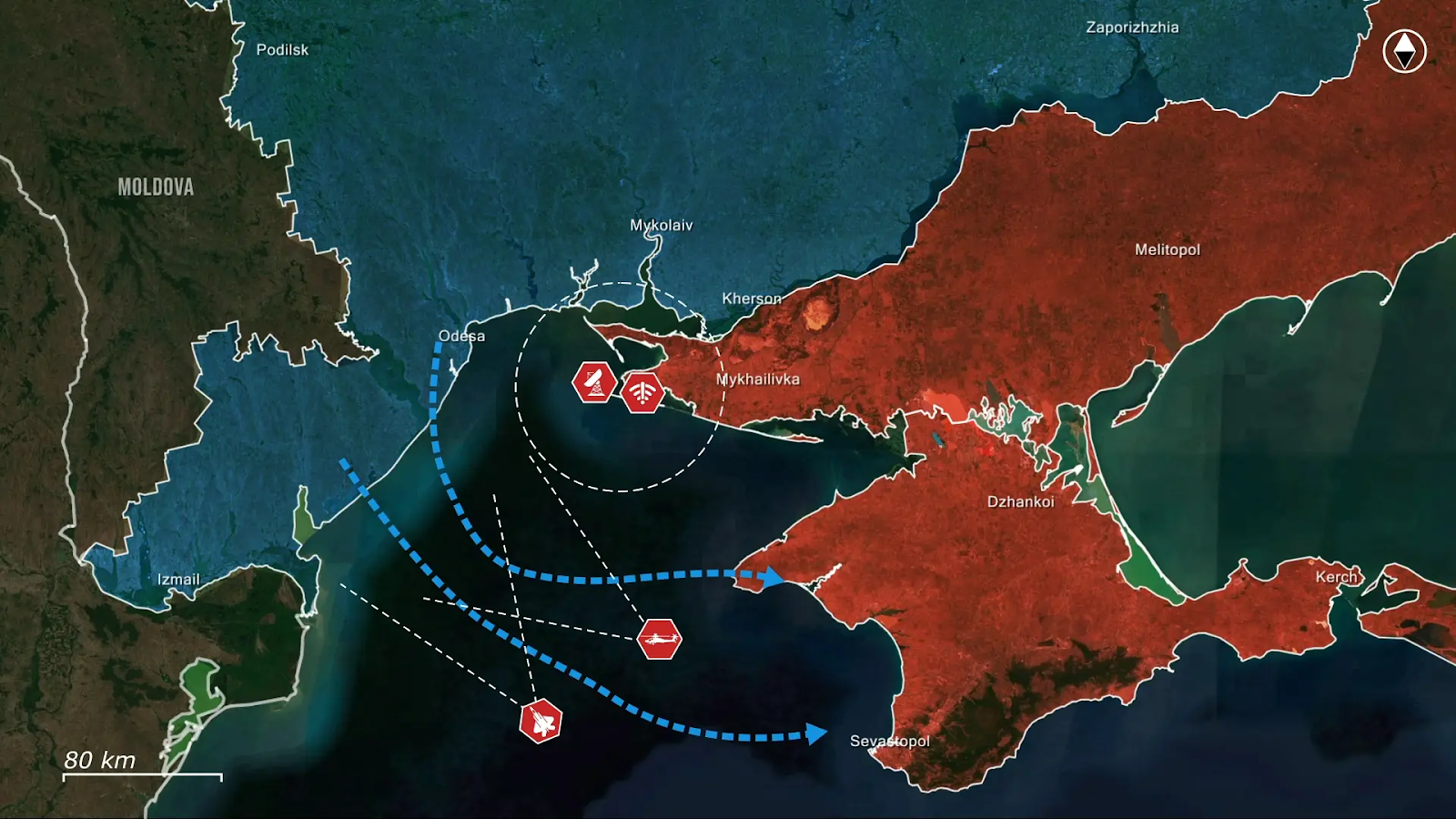
However, these emplacements are incredibly vulnerable; as they are only connected to the mainland through narrow strips of land, or not at all, forcing Russians to use boats to supply these exposed outposts.
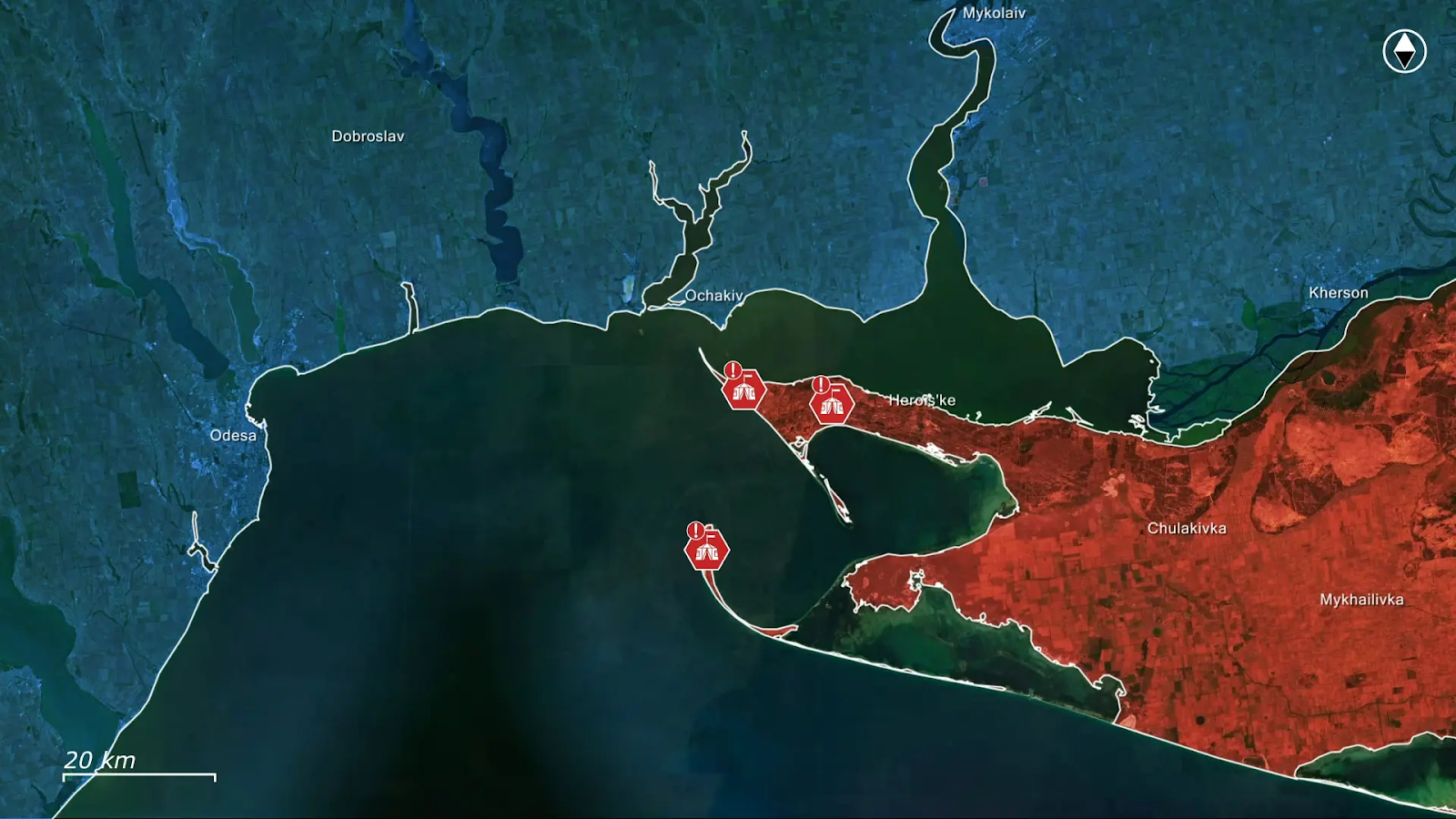
Ukrainians exploited this masterfully, and in the weeks leading up to the operation, they increasingly targeted these outposts, using FPV drones to strike buildings Russians used as barracks situated along the route the assault group would later take.
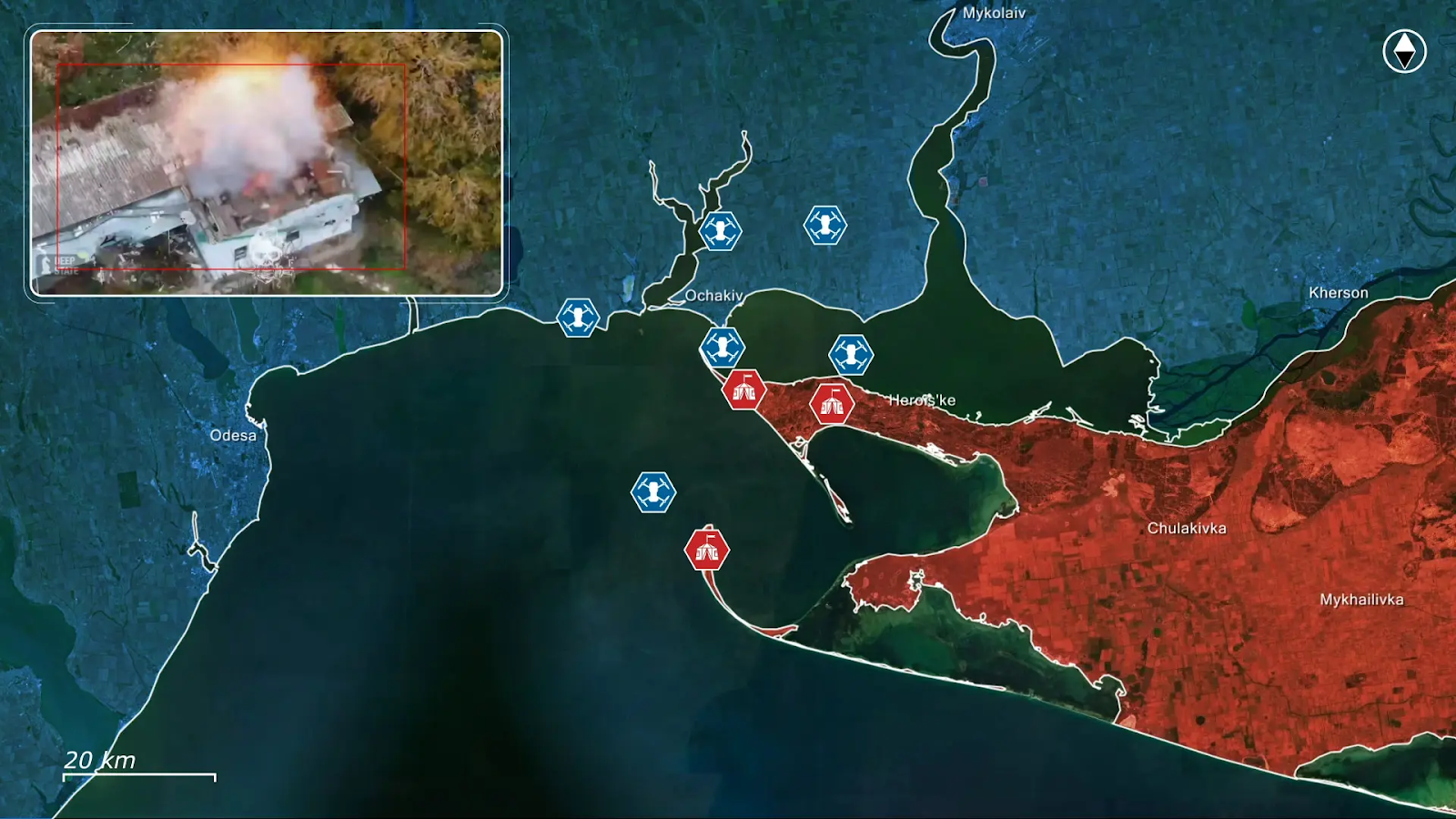
Ukrainians also used a Bayraktar drone to destroy Russian boats resupplying the outposts and rotating the troops stationed there.
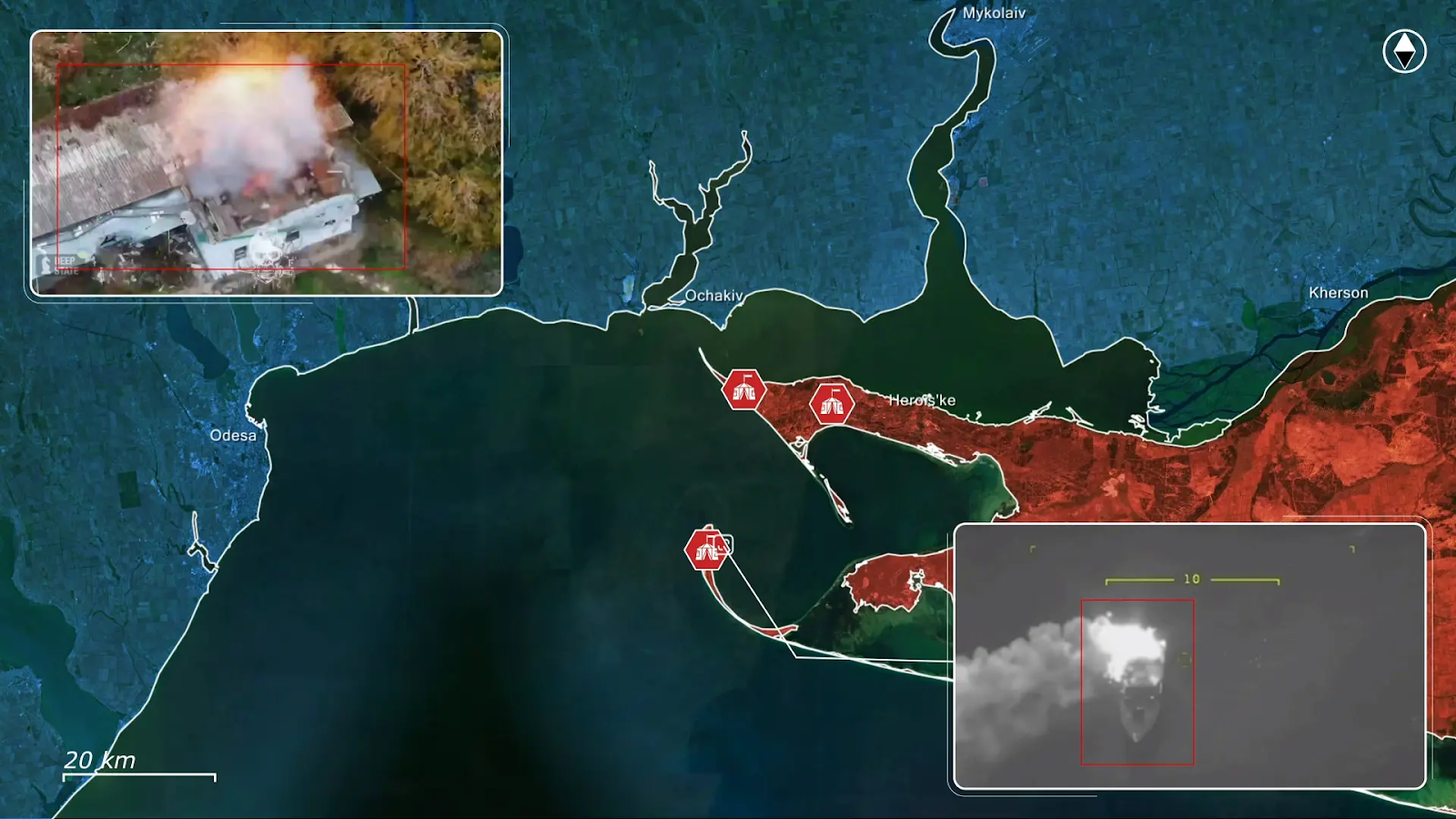
However, Russians didn’t suspect a thing; they understood that these outposts were vulnerable, and likely wrote these events off as acceptable casualties to hold such exposed positions. Notably, Ukrainians likely conducted a second raid on the small settlement of Pokrovske on the Kinburn further north, with another Ukrainian flag appearing raised above the settlement early in the morning.
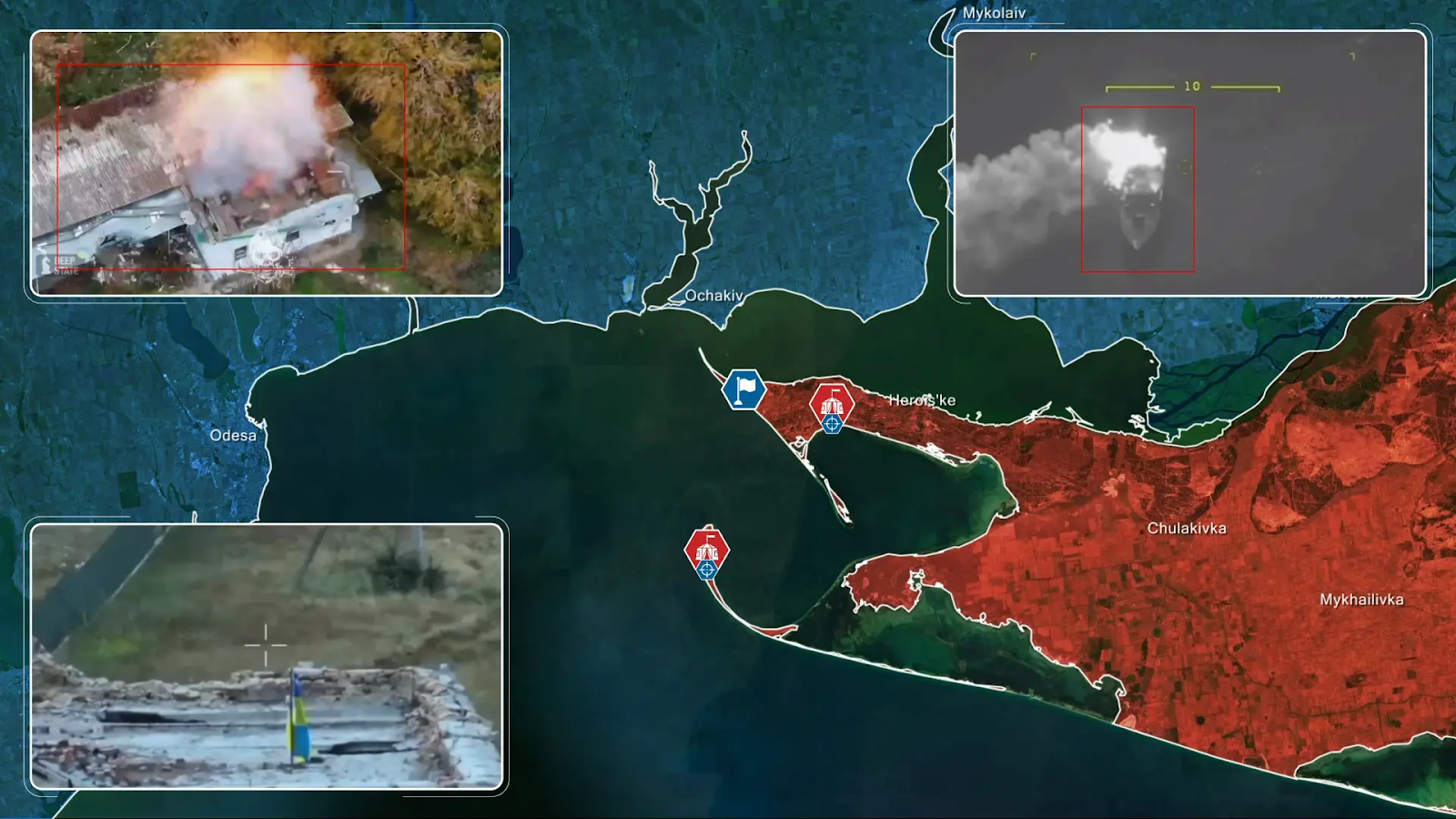
The disruption of these outposts mean only one thing: Ukrainians are planning an intensification of their operations along this axis. As mentioned previously, one of the operations could be a targeted strike operation against Russian assets in Crimea, with many air defense systems, radars, logistics, and command posts highly likely targets. Notably, such a threat doesn’t even have to be from Ukrainian missiles, as naval drones could now more stealthily pass along the coastline and simply launch waves of FPV drones into the Russian-controlled peninsula.

In the past, the Ukrainian security service has released tons of videos showing such strikes, with strike drones and FPVs flying low, dodging Russian missiles, and taking out targets worth hundreds of millions of dollars.
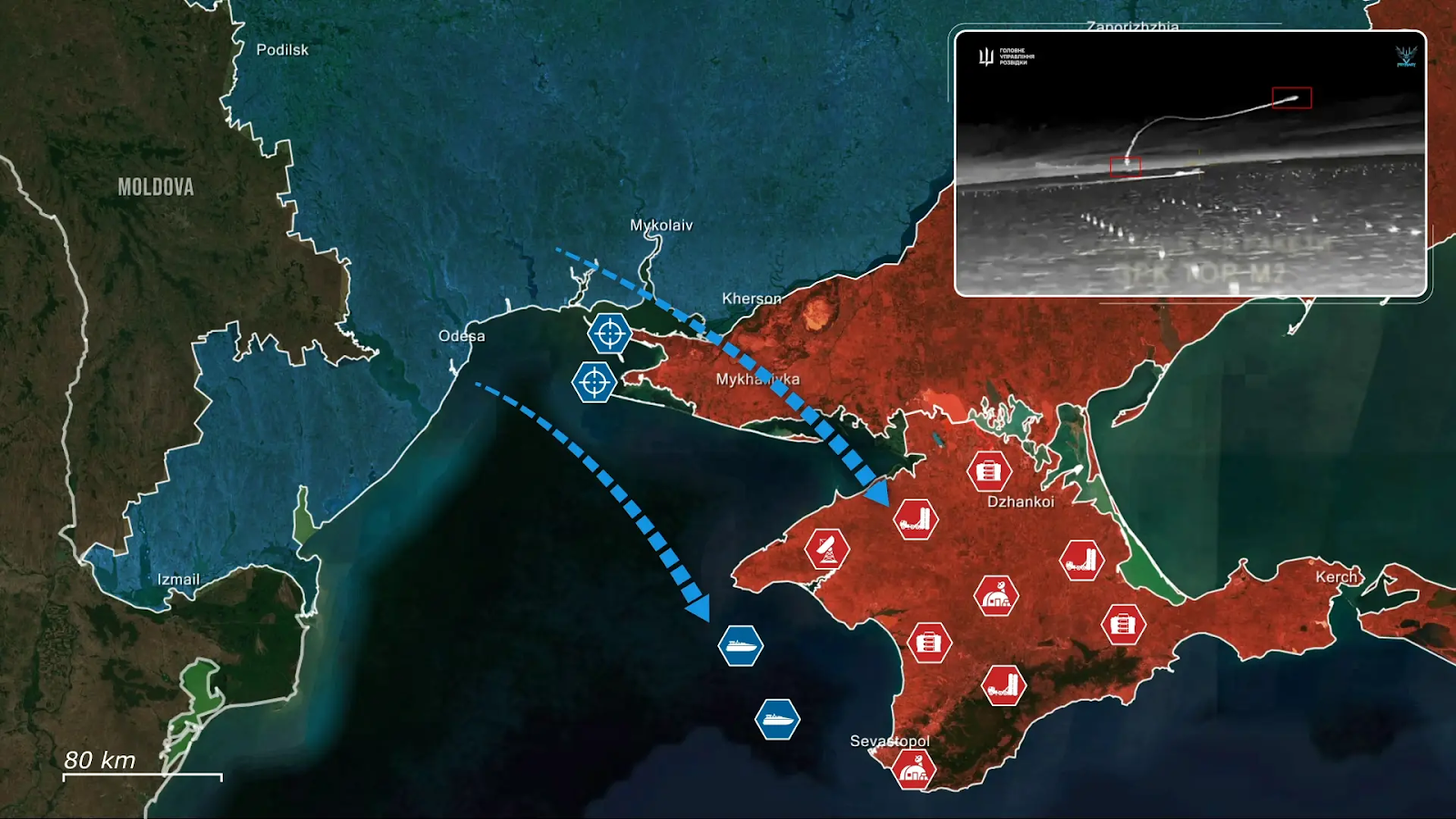
Alternatively, this amphibious special forces raid could be a part of the broader war in the Black Sea itself; with drilling platforms serving as makeshift castles from where either side can surveil the area, electronically disrupt equipment, lock down airspace with air defense missiles, or launch strikes from. Only recently Ukrainian naval special forces released new footage of a combined assault on one of these platforms, taking out the Russians defending it with FPV drones, and using the new position to fire missiles at Russian fighter jets.
Overall, Ukrainians executed a daring amphibious raid on several vulnerable Russian outposts, launching preparatory strikes for the operations while leaving Russians none the wiser. The successful outcomes of these missions have now opened the door for a wide range of follow-up operations, while Russians are left guessing as to what the next Ukrainian move will be.
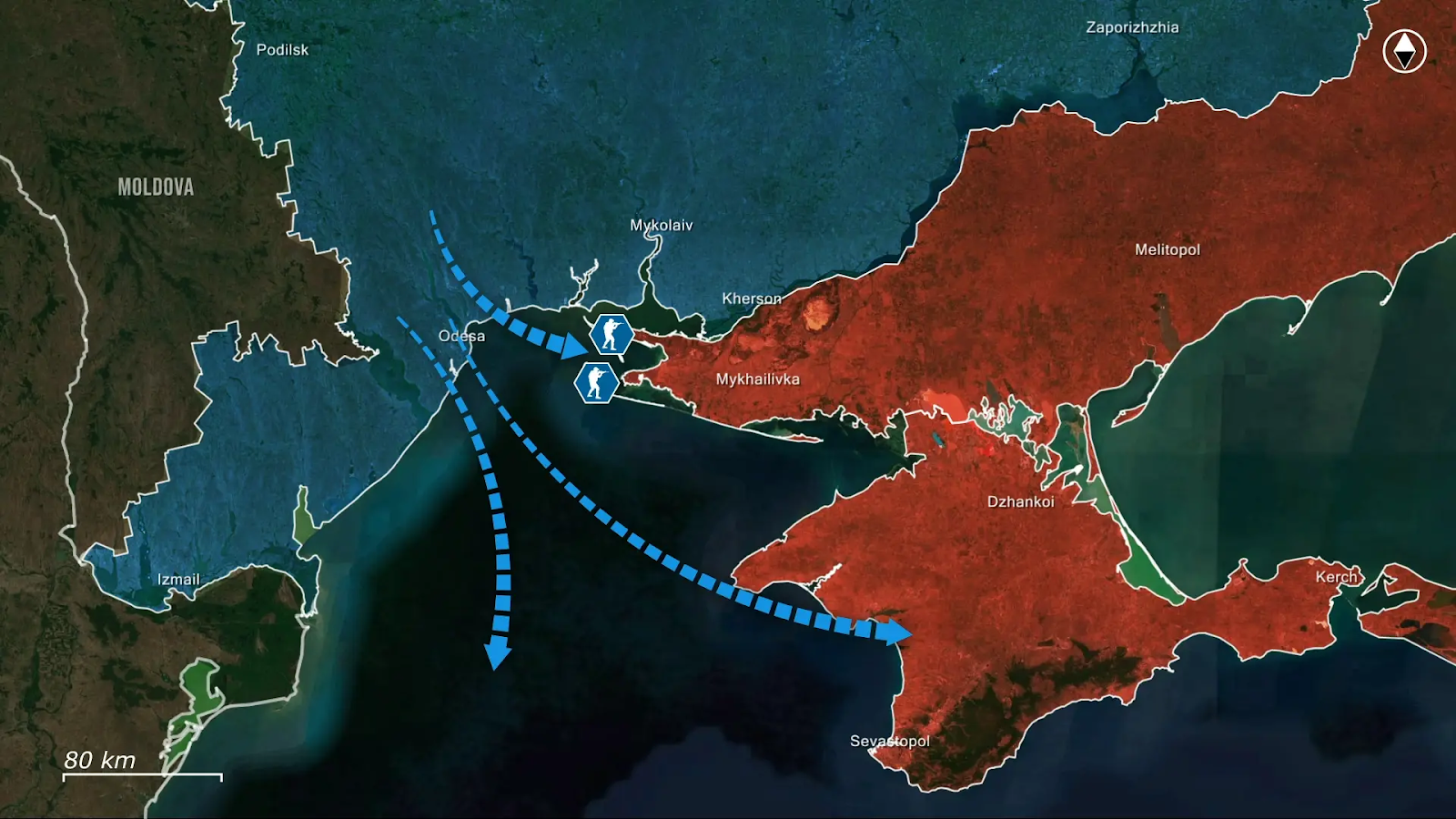
In our regular frontline report, we pair up with the military blogger Reporting from Ukraine to keep you informed about what is happening on the battlefield in the Russo-Ukrainian war.

Thanks to your incredible support, we’ve raised 70% of our funding goal to launch a platform connecting Ukraine’s defense tech with the world – David vs. Goliath defense blog. It will support Ukrainian engineers who are creating innovative battlefield solutions and we are inviting you to join us on the journey.
Our platform will showcase the Ukrainian defense tech underdogs who are Ukraine’s hope to win in the war against Russia, giving them the much-needed visibility to connect them with crucial expertise, funding, and international support.
We’re one final push away from making this platform a reality.
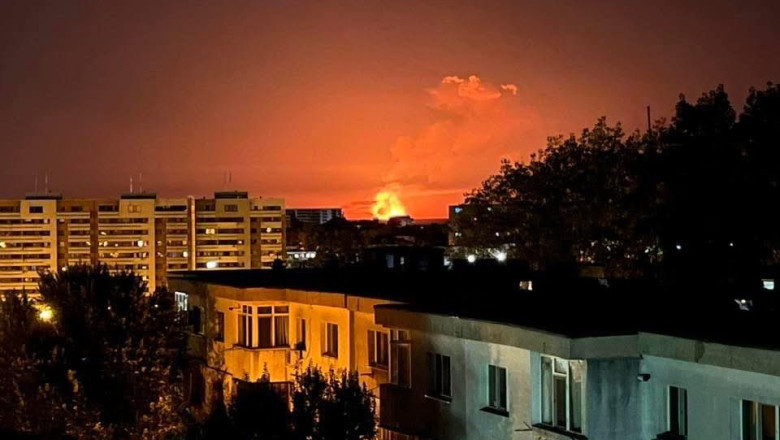
Tulcea county in Romania declared a 90-minute air alert on the night of 6 August as Russian strike drones targeted southern Odesa Oblast across the Danube River.
The Romanian county sits on the opposite bank of the Danube from Ukraine’s southernmost cities. Romanian residents could clearly observe air defense operations and explosions from Ukrainian territory during the Russian drone attack.
The resulting fire from the shelling caused panic among Romanian civilians, according to the report. Twenty people called emergency services, believing the blaze was occurring near their location.
“Response forces remained in the area to monitor the situation and intervene if necessary. We again call for calm and remind that Russia’s attack targets are not Romanian territory, and we call on citizens to follow safety measures recommended by authorities,” Romanian fire services reported, according to Digi24.
The attack was also visible from Moldovan territory. Readers reported the incident to local publication Nokta.
This comes as Russian forces launched 45 Shahed-type strike drones and decoy drones of various types from the evening of 5 August. Air defense systems destroyed or suppressed 36 Russian drones across northern, southern, and eastern Ukraine.
Since Russia’s full-scale invasion began, drone debris from attacks on southern Ukrainian targets has repeatedly fallen in border areas of Moldova and Romania. Some projectiles have penetrated deeper into their territories.
Following initial incidents, Romanian authorities began issuing air alerts along the Danube riverbank when Russian attacks occur nearby.
This summer, at least one Russian Shahed-type drone entered Lithuanian airspace through Belarusian territory.
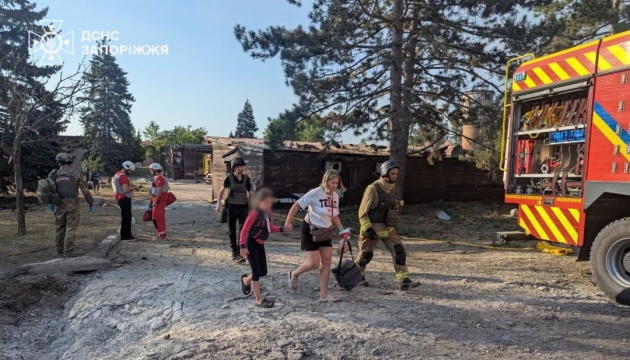

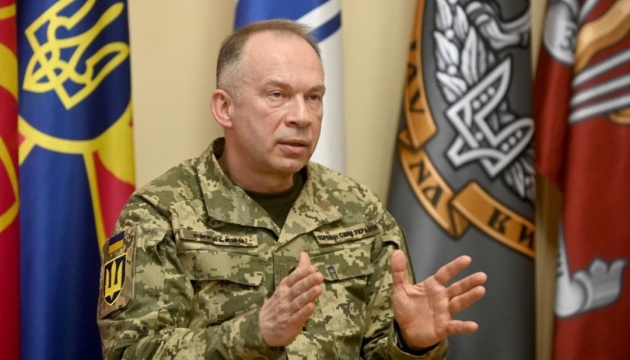
New Delhi vows to continue buying Russian crude despite Donald Trump’s threat to hike tariffs

© AP

Two people died and 12 others were injured, including children, when Russian forces struck a recreation base in Zaporizhzhia district in the early hours of 6 August, according to Zaporizhzhia Oblast Governor Ivan Fedorov.
The State Emergency Service later clarified that occupying forces had targeted a recreation base specifically.
At least nine buildings sustained damage in the attack. Emergency services worked at the scene, with rescue workers transporting the wounded and handing them over to emergency medical teams while evacuating other people from the area.
Among the nine hospitalized were two children. “Both are under medical supervision, one is in serious condition,” Fedorov said in a subsequent update.
Emergency responders worked to extinguish fires that broke out in an outbuilding, vehicles, and five separate blazes across open territory. The attack damaged nine single-story holiday cottages at the recreation facility.
The assault formed part of broader overnight Russian attacks across Ukraine. In Dnipropetrovsk Oblast, Russian occupying forces struck Nikopol and Synelnykivsk districts during the night, damaging an enterprise, residential building, and infrastructure, regional head Serhiy Lysak said.
Ukrainian Air Forces reported that Russia launched 45 Shahed-type strike drones and decoy drones of various types from the evening of 5 August. Air defense systems destroyed or suppressed 36 Russian drones across northern, southern, and eastern Ukraine.
Russian forces launched the drones from the directions of Kursk and Primorsko-Akhtarsk in Russia, and from Cape Chauda in temporarily occupied Crimea. Aviation, anti-aircraft missile forces, electronic warfare units, unmanned systems units, and mobile fire groups of Ukraine’s Defense Forces repelled the air attack.
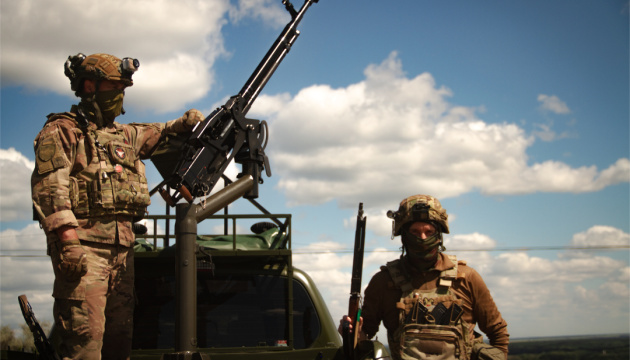

Ukraine’s Prime Minister Yulia Svyrydenko announced preparations for three joint Ukraine-US projects in the mining sector, with implementation planned to begin within the next 18 months under a bilateral minerals agreement.
Svyrydenko made the announcement on Facebook following negotiations with US Treasury Secretary Scott Bessent. The officials discussed creating the American-Ukrainian Investment Recovery Fund, with the first board of directors meeting scheduled for September.
“We are working to expand its mandate so that the fund can also invest in the defense sector. The task is to launch the first three projects within 18 months,” Svyrydenko said.
The talks focused significantly on defense cooperation, including President Volodymyr Zelenskyy’s initiative for a potential agreement on production and export of Ukrainian drones, as well as possible procurement of American weapons.
“We also raised the issue of strengthening sanctions pressure and cooperation with international financial organizations,” Svyrydenko added.
The mining projects represent the latest development in expanding Ukraine-US economic ties. On 1 May, Economics Minister Yulia Svyrydenko and the US Treasury Secretary signed a minerals agreement. The following day, the government submitted the Investment Recovery Fund agreement to the Verkhovna Rada (Ukraine’s Parliament) for ratification.
The International Policy Committee supported the minerals agreement on 6 May, and the Verkhovna Rada voted to ratify the Ukraine-US minerals agreement on 8 May.
The investment fund’s expanded mandate could potentially channel American capital into Ukraine’s defense industry, marking a significant shift in bilateral economic cooperation beyond traditional reconstruction efforts.
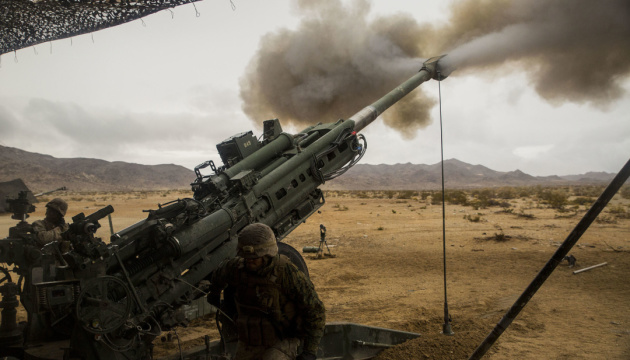
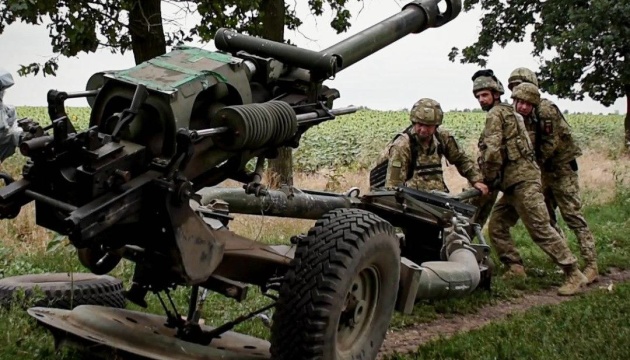
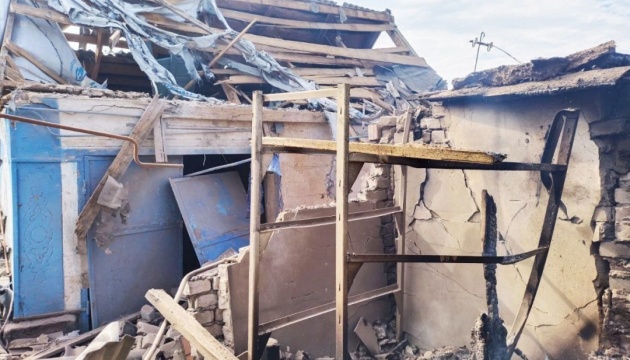
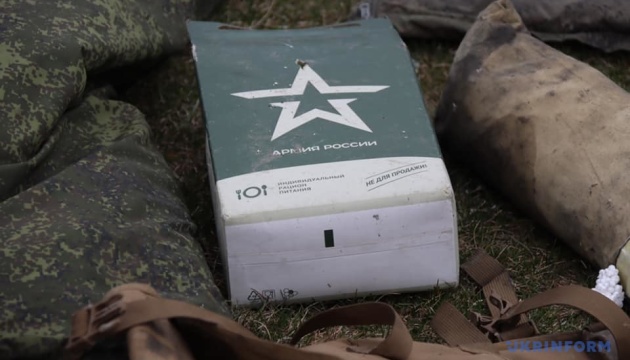
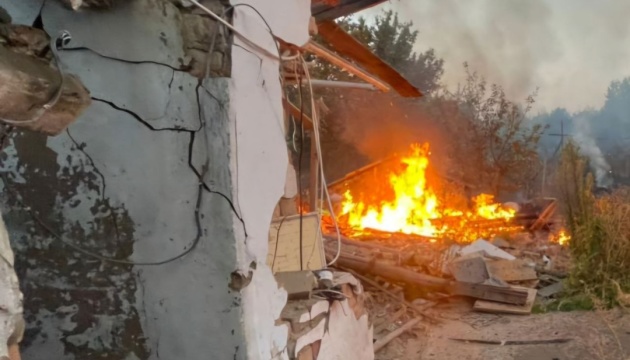

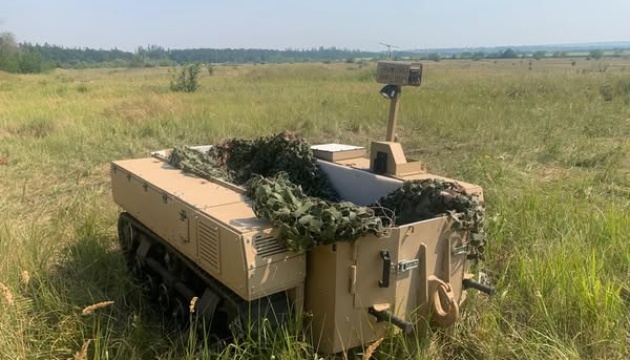
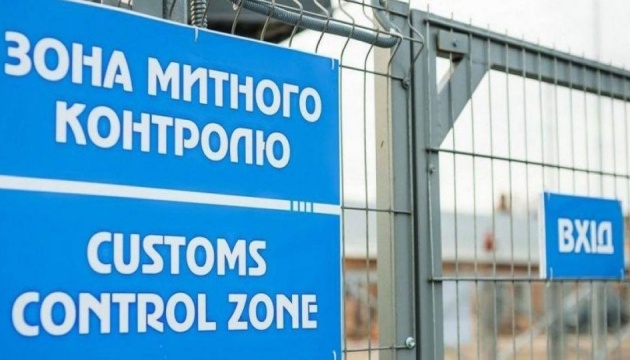
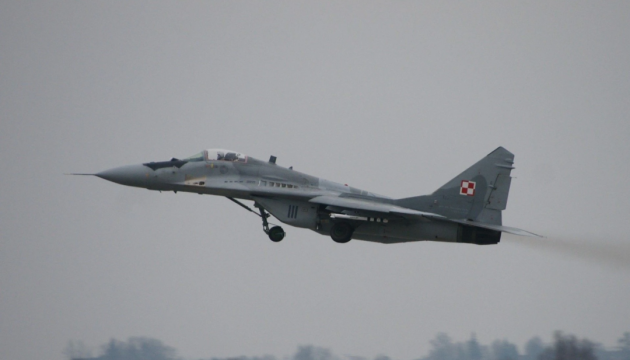
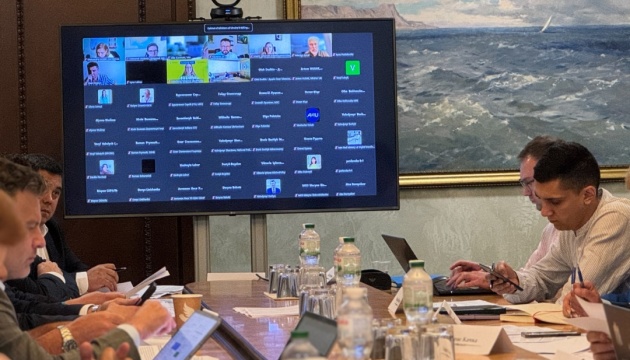


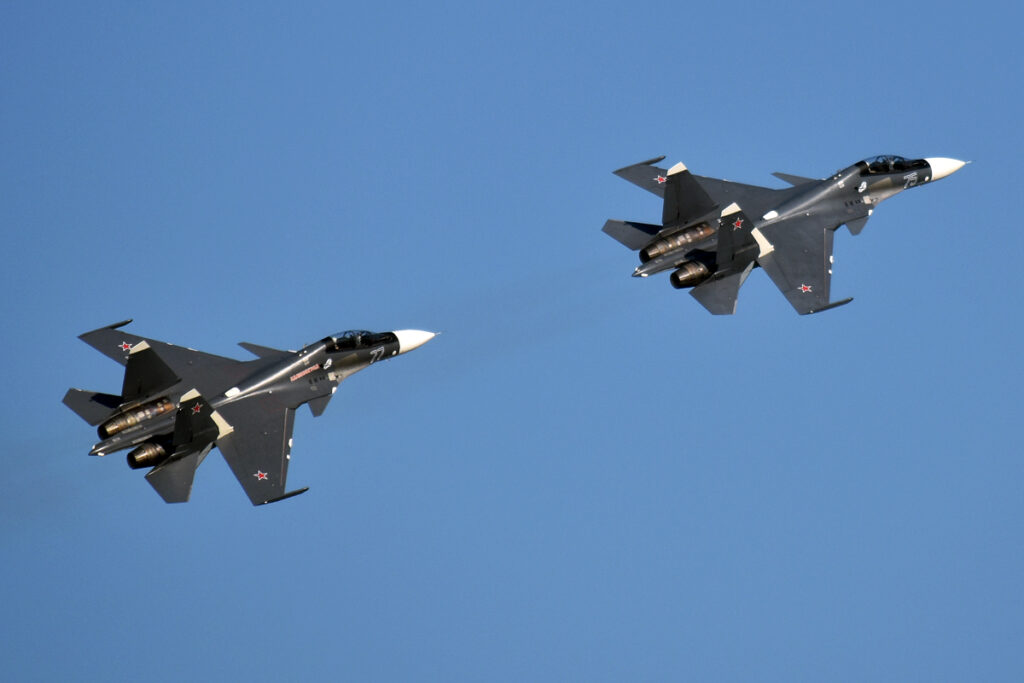
On the night of 3 August, the SBU’s attack drones “visited” Saky airfield, 150 miles from the front line in Russian-occupied Crimea, according to the SBU.
The explosive drones destroyed one Sukhoi Su-30 fighter jet and damaged another—and also damaged three Sukhoi Su-24 bombers, according to the SBU. An aviation depot, potentially containing weapons or fuel, was also hit, the SBU claimed.
“The successful special operation of the SBU in Saky is another step towards weakening the enemy’s ability to wage a war of aggression against Ukraine,” the SBU announced. “The occupiers should remember that they will never feel safe on our land!”
What’s especially embarrassing to the Russians is that they’d just finished building at least 12 concrete bunker shelters at Saky to house the aircraft operating from the often-attacked base. “Inside these reinforced shelters, we’ve identified both jets and larger drones, including the Orion,” reported Tatarigami, the head of the Ukrainian Frontelligence Insight analysis group.
The shelters didn’t fully protect the planes at Saky, if the SBU’s claims are accurate.
The Saky raid brings to 27 the number of Russian aircraft Ukrainian drones have destroyed or damaged since 1 June. It’s not the worst month for the Russian air force since Russia widened its war on Ukraine 42 months ago, but it’s close. In all, Russian forces have lost 162 planes and 157 helicopters.
The SBU’s deep-strike campaign, mostly targeting Russia’s own deep-strike assets, dramatically widened this summer. Frustrated in their attempts to intercept Russian aircraft and their munitions in mid-air closer to their targets, Ukrainian forces are increasingly aiming “left of the boom,” to borrow the US Army’s phrasing—and hitting the aircraft and munitions on the ground, before they can launch.
On 1 June, the SBU smuggled long-haul trucks full of explosive first-person-view drones close to five Russian bomber bases.
Around 100 of the tiny FPVs, each weighing just a few pounds, swarmed the bases. Relaying signals back to their operators via Russia’s own cellular phone network, the drones homed in on bombers and other warplanes parked on the bases’ tarmacs.
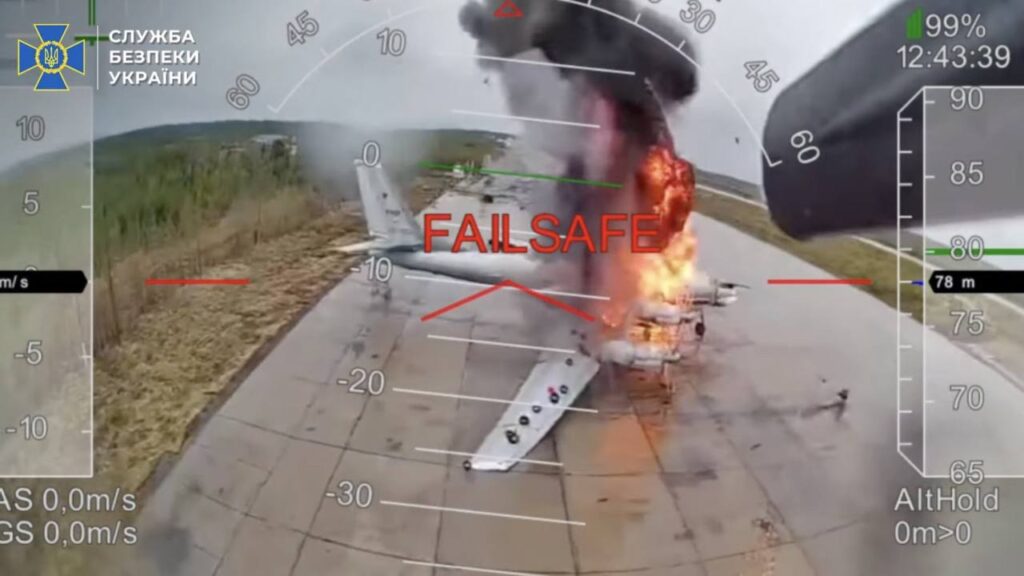
In the immediate aftermath of the 1 June raid, the SBU claimed its drones had struck around 40 warplanes at Dyagilevo, Ivanovo, Olenya, Belaya and Ukrainka air bases—respectively 310, 470, 1,200, 2,700 and 3,700 miles from Ukraine.
But close scrutiny of satellite imagery seemed to confirm just 13 or 14 losses, including seven or eight Tupolev Tu-95 bombers, four Tupolev Tu-22M bombers, a Beriev A-50 radar plane and a transport plane. Alongside Tupolev Tu-160s, the Tu-22Ms and Tu-95s are Russia’s main platforms for long-range cruise missile strikes on Ukrainian cities.
By eliminating a portion of Russia’s missile-carriers, the 1 June Operation Spider Web could have “significant effect that should dramatically reduce Russia’s ability to launch missiles against Ukrainian cities and kill civilians,” noted Ben Hodges, a retired US Army general.
On the night of 27 June, the SBU’s long-range attack drones—potentially Ukroboronprom An-196s—“dealt another painful blow to the occupiers,” according to the service. The explosive drones struck the Russian airfield in Kirovske, 130 miles from the front line in southern Ukraine.
“Fire damage was inflicted on the locations of the aviation component, air-defense systems, ammunition storage depots, as well as reconnaissance and strike UAVs of the enemy,” the SBU reported.
The SBU claimed it destroyed Mil Mi-8 and Mi-26 transport helicopters and a Mil Mi-28 attack helicopter as well as a Pantsir air-defense vehicle. A reported secondary explosion may point to Russian ammunition stocks—or parked drones—cooking off.
“The SBU is systematically working to reduce the Russian Federation’s capabilities to deliver air and bomb strikes on the territory of Ukraine,” the service explained. “The occupiers should realize that their expensive military equipment and ammunition are not protected anywhere: neither on the line of combat contact, nor in temporarily occupied territories, nor in the deep rear of the enemy.”
The very same night drones struck Kirovske, the SBU and Ukraine’s special operations command, the SSO, struck a second time—and damaged if not destroyed as many as five Russian air force Sukhoi Su-34 fighter-bombers at Marinovka air base in Volgorod Oblast, 180 miles from the front line.
The 150 or so Su-34s that are left, after several dozen have been lost over Ukraine, are Russia’s primary platforms for dropping KAB winged glide-bombs on Ukrainian positions. The 1,100- and 2,200-pound KABs range as far as 40 miles. They can be jammed, but the sheer number of KABs raining down on the Ukrainians—thousands per month—makes them among the most damaging munitions in the Russian arsenal.
The 27 June strikes capped a painful month for the Russian air force. The 3 August raid extended the costly summer into early August.


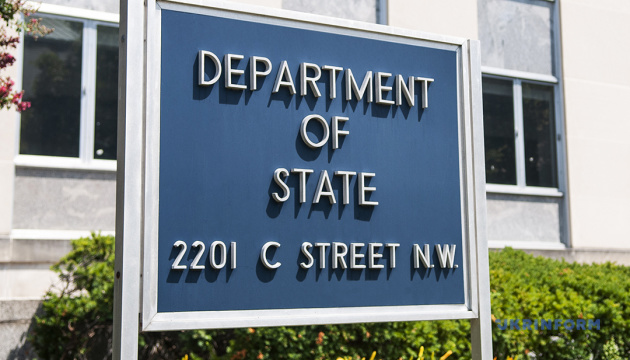
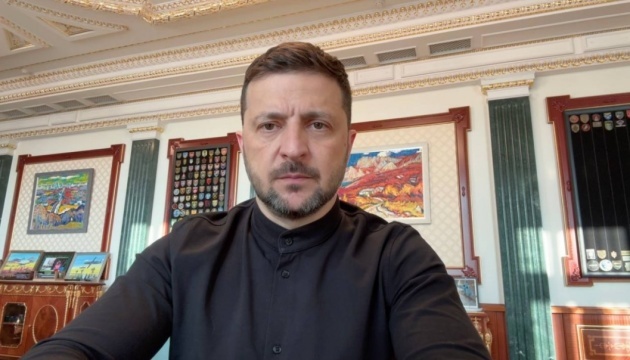

Finland won’t join NATO’s new weapons procurement program for Ukraine, opting instead to rely on its own defense industry. Finnish Defense Minister Antti Häkkänen has announced that his country is focusing on a domestic industrial program, Yle reports.
Amid increased Russian attacks, the US and NATO are jointly developing a new scheme to deliver arms to Ukraine, now funded by Europe but drawn from American arsenals. The goal is to raise $10 billion to support Ukraine’s defense as Moscow escalates the war.
“We have allocated our resources to an internal industrial program, under which we place orders for Ukraine from companies across Finland,” he states.
Häkkänen emphasizes that the program was developed in cooperation with Ukraine to provide “maximum support” and that other countries understand Finland’s approach, especially given its shared border with Russia.
“We continue to support Ukraine with strong commitment and energy, but now we are prioritizing production by domestic companies,” he adds.
Earlier, President Volodymyr Zelenskyy said that Sweden, Norway, and Denmark had allocated over $500 million to buy weapons for Ukraine through NATO’s new procurement mechanism. Finland has chosen a different vector, but its support remains consistent and strategically vital.
